We traveled to Flanders in search of the great Flemish masters, and we did it by bike!
If in recent years, the Belgian region has been busy organizing cultural events focused on celebrating the great artists who were born, lived or worked there, such as Rubens, Bruegel, van Eyck or, more recently, Dieric Bouts and James Ensor, whose 75th birthday was recently commemorated, a new project was launched in 2024 to highlight the work of Flemish artists in the place for which they were created.
Following some of the milestones of this “Flemish Masters in situ” we have set course for the Belgian capital to travel from there over five days to some of the locations where these works of art are preserved or, in other cases, to visit the artists’ studios or residences.
This has been our route, designed according to the things we did not want to miss on this trip, but there are many more destinations and works to discover. On the project’s website, in fact, you can find specific routes, which you can follow individually or combining several of them:
Masters by the sea, marked by the works of Ensor, Spilliaert, Delvaux and Permeke.
Masters by the river Lys, to discover the village of Sint-Martens-Latem, center of symbolism, expressionism and impressionism in Flanders.
Masters of Imagination: out and about in Leuven: a walk through the churches, beateries and abbeys in and around Leuven.
Master Tour Theodoor van Loon, dedicated to the baroque master of light, splendor and religious beauty.
Masters from Mechelen and More: Van Dyck, Coxcie, Rubens, and Lucas Faydherbe.
Master Tour Peter Paul Rubens: the genius of Antwerp, where his masterpieces adorn churches and museums.
Master Tour in Bruges: Memling, the museum St. John’s Hospital, the church and convent of the Discalced Carmelites, the Medieval Hof Palace…
Master Tour in Ghent, with works by Antoon van Dyck or the Mystic Lamb by the Van Eyck brothers.
Master Tour in Cortrique, the perfect blend of medieval churches, design, modern art and contemporary architecture.
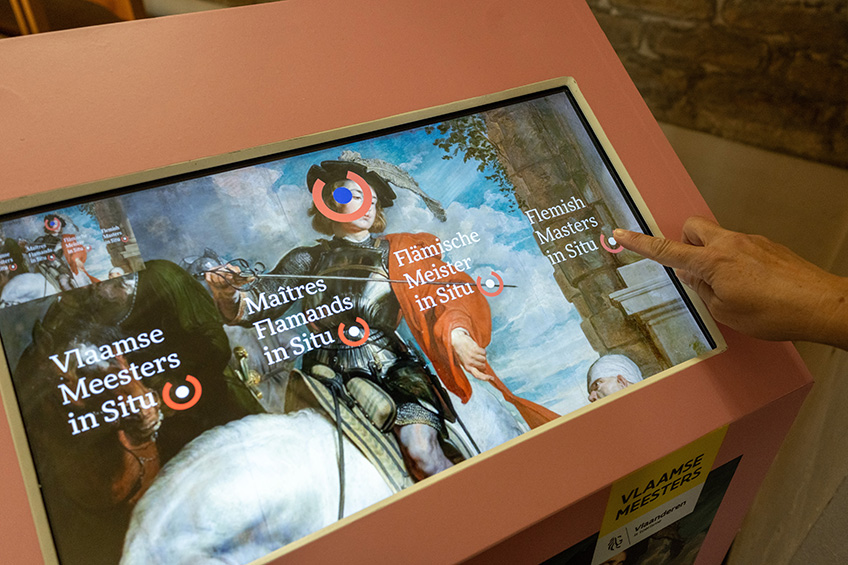
Getting to Brussels is easy from almost any city in the world. From Madrid, our point of origin, the flight takes just two and a half hours and the train transfer to the center, from the airport itself, is also very fast.
Our first stop once there was the bike rental company. Although you can find a multitude, our experience with Bike Packer was great. At this point it is important to note that cycling in Flanders, and especially on the route we chose, is very easy, there is hardly any slope and the infrastructure for cycling tourism is spectacular, with a system of signposted routes that make the experience totally pleasant even for those not used to travel by this means of transport. For this reason, this travel option is good to do alone, as a couple, with friends or with the family.
However, we do recommend you to have a navigation application, such as Komoot, to take the routes designed already included in your mobile, so that the only concern during the journey is to choose the best point of view to take your pictures.
Once on the bike and with our luggage in the saddlebags, we headed for Ghent. In this first stage there are two possible options: go directly to Ghent by train or reach the city through a route that will take you through Oudenaarde, which will surely ring a bell to cycling fans for hosting the Tour of Flanders Museum, among other tourist attractions, and St. Marten Latem, where you can visit the houses/workshops of two important Flemish artists, perhaps not well known to the general public, but whose works are in major Belgian museums: Gust De Smet (1877 – 1943) and Edgar Gevaert (1891-1965).
In our case, since both residences were temporarily closed those days, we went by train to Ghent. If you also choose to take the train at this or any other time during your trip, there are three important things to keep in mind:
– at Brussels Central Station you are not allowed to take bikes on or off, so you will have to go to Nord or Midi, depending on which one suits you best when you pick up your bikes.
– you need to buy an additional special ticket for your bike at the station.
– when boarding the train, make sure you board in one of the carriages specifically designed for bikes. These are usually the ones in the middle of the train.
We recommend you to have at hand the website of the Belgian railroads, very useful to look at the schedules and platforms and to check in advance which are in each train those wagons in which you can travel with your bike.
DAY 1: GHENT
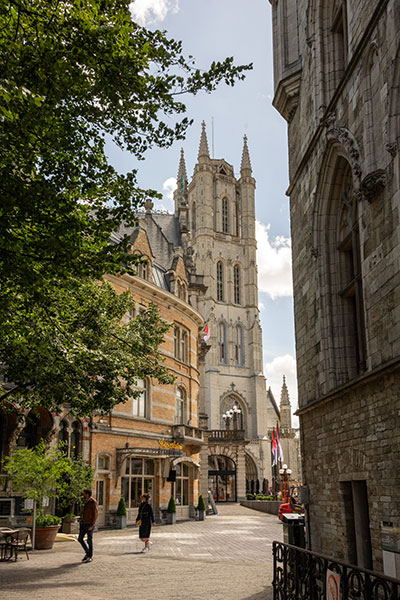
Ghent was a must for us because of its beautiful historic center but especially because we wanted to meet again the altarpiece of the Mystic Lamb by the van Eyck brothers in its original location. We had already had the opportunity to admire it after its restoration but this time we were able to see it in its new home in the Cathedral of St. Bavo, where it was created almost six centuries ago. In the crypt of the Cathedral, the new visitor center offers the possibility of taking a tour with augmented reality glasses, which explains the origin of the commission to Hubert van Eyck by the commissioners, Joos Vidj and Elisabeth Borluut, its location, details of the painting and the construction of the chapel, as well as reminding us of the tumultuous history of the Mystic Lamb over the centuries.
After this visit and after enjoying lunch in the neighboring Goudenleeuwplein square, we headed to the MSK, the Museum of Fine Arts in Ghent. Founded in 1798, this is one of the oldest museums in Belgium and houses about 20,000 works of European painting and sculpture, from the Middle Ages to the present day, with a special focus on Belgian artists. There we find, for example, works by Edgar Gevaert, George Minne, Bosch, Rubens or Ensor.
Back in the center, we walked through the main arteries of the city, such as the historic Graslei and Korenlei docks, today a meeting place along the Leie River, where we could admire the characteristic houses with stepped roofs and the churches of St. Michael and St. Nicholas. In Ghent art is breathed in every corner and, although it seems that the great work of the van Eyck brothers could overshadow everything else, a view of the churches of St. James or St. Savior are also dazzling. So is the imposing Benedictine Abbey of St. Peter, founded in the seventh century and one of the most powerful in Flanders.
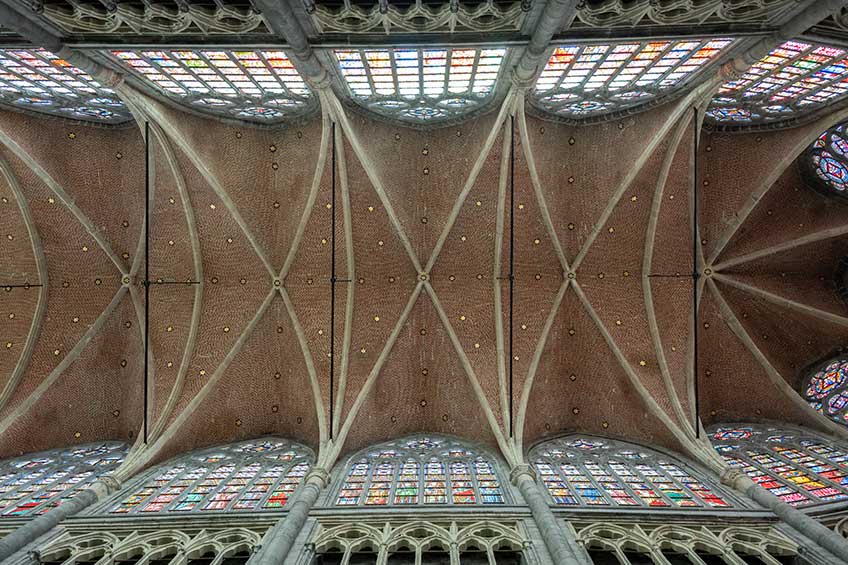
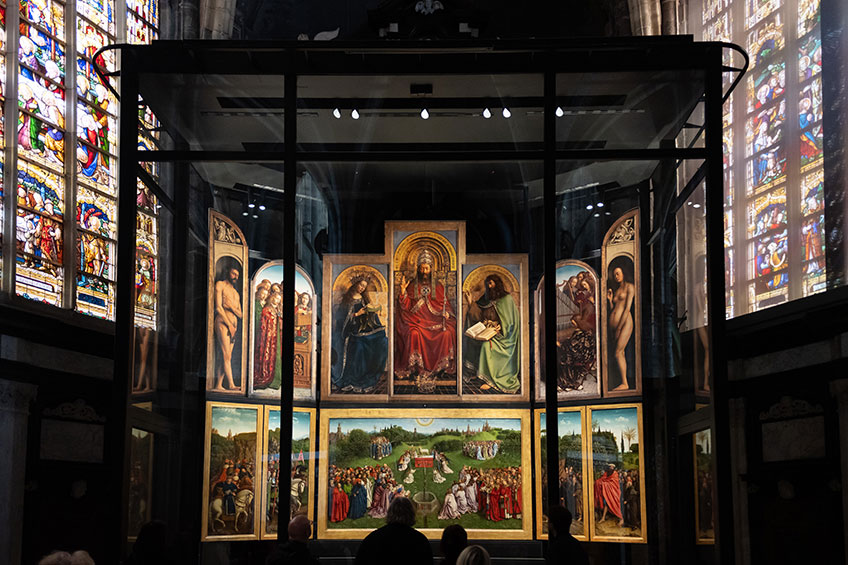
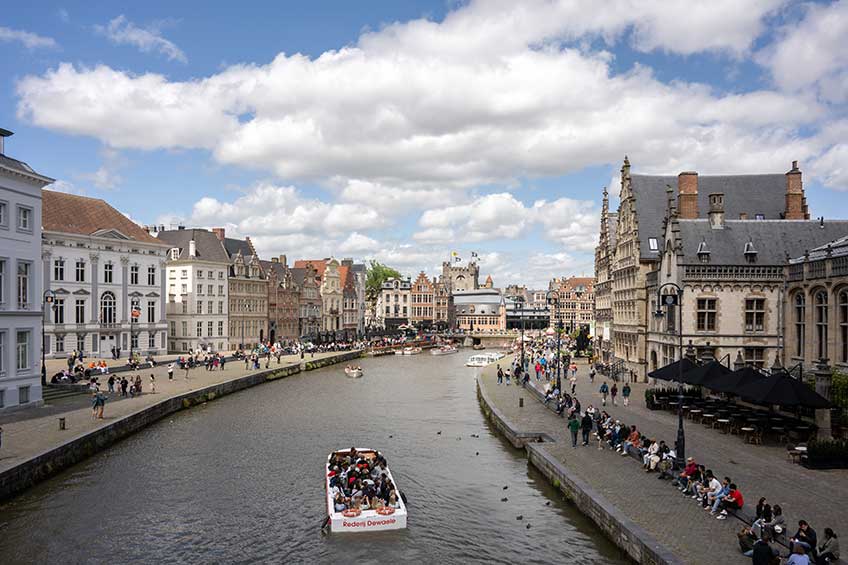

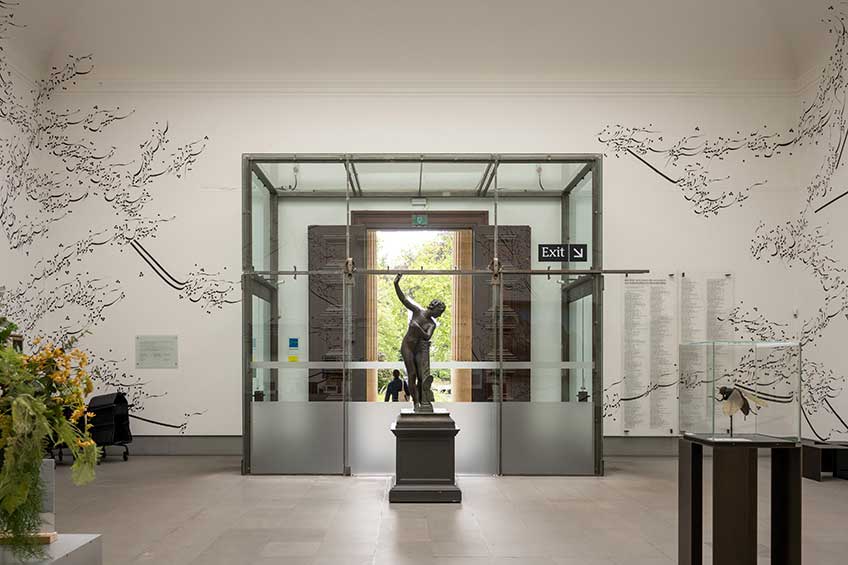
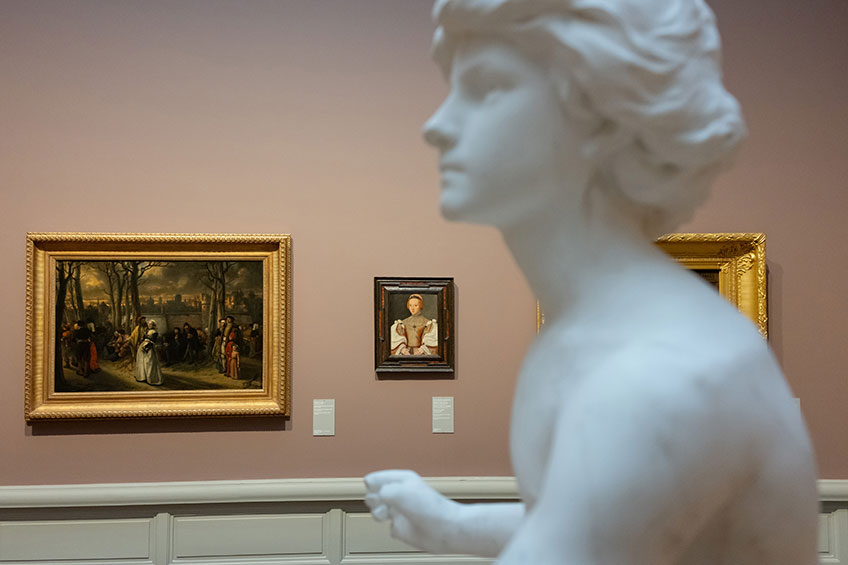
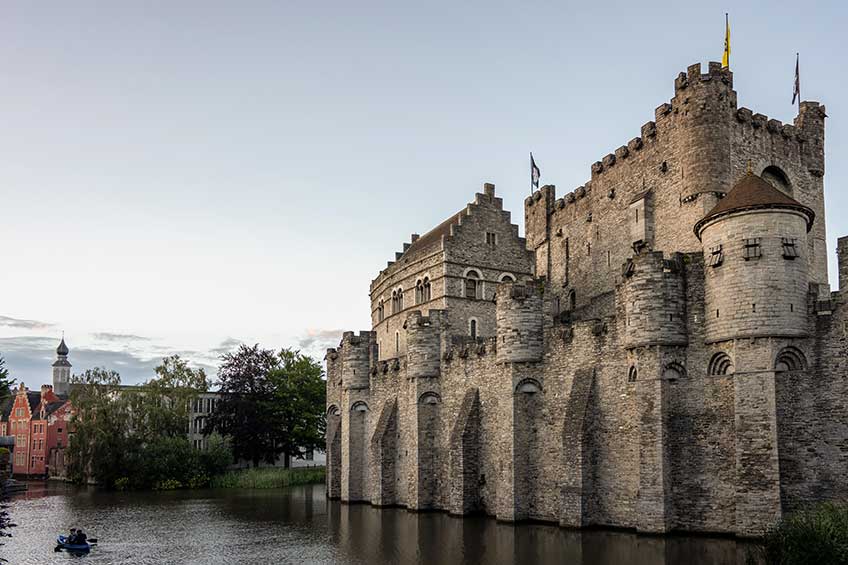
We end the tour in the picturesque and bohemian neighborhood of Patershol. There, in addition to a large number of cafes and restaurants, we find the Castle of the Counts, which retains its original defense system virtually intact. Needless to say that, in addition to its medieval alleys, traditional houses, canals and the art of the Flemish primitives, Ghent, like the entire Flemish region, has other charms that we are more than willing to enjoy, such as its gastronomy, which includes, of course, its great variety of beers.
DAY 2: ON THE WAY TO ANTWERP
We start the second day facing what will be the biggest challenge on the bikes on this trip: the nearly 80 kilometers that run between Ghent and Antwerp and that we will do following a route parallel to the course of the Scheldt River. This is not just any river, its generous flow is one of the main sources of life in the region and gives rise to breathtaking river landscapes. Moreover, in the case of Antwerp, it is intimately linked to its economic development, its port being one of the largest and most important in Europe.
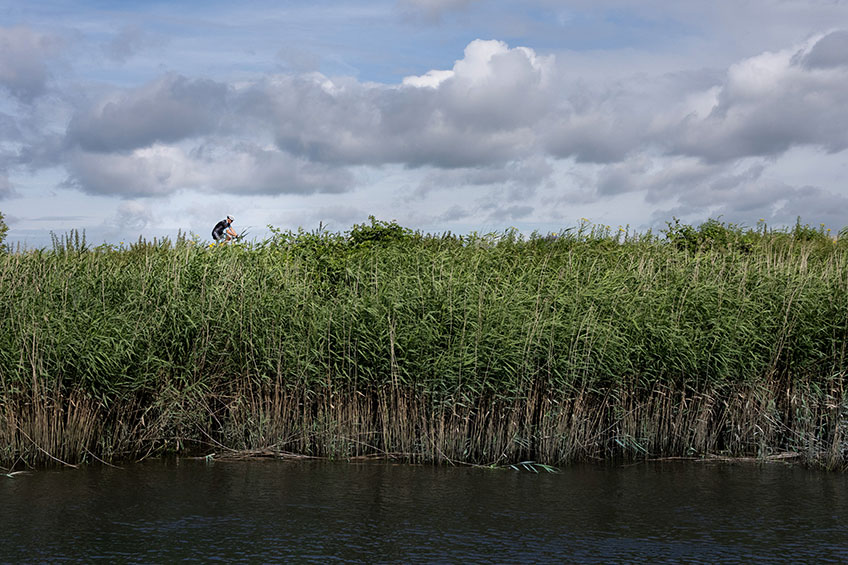
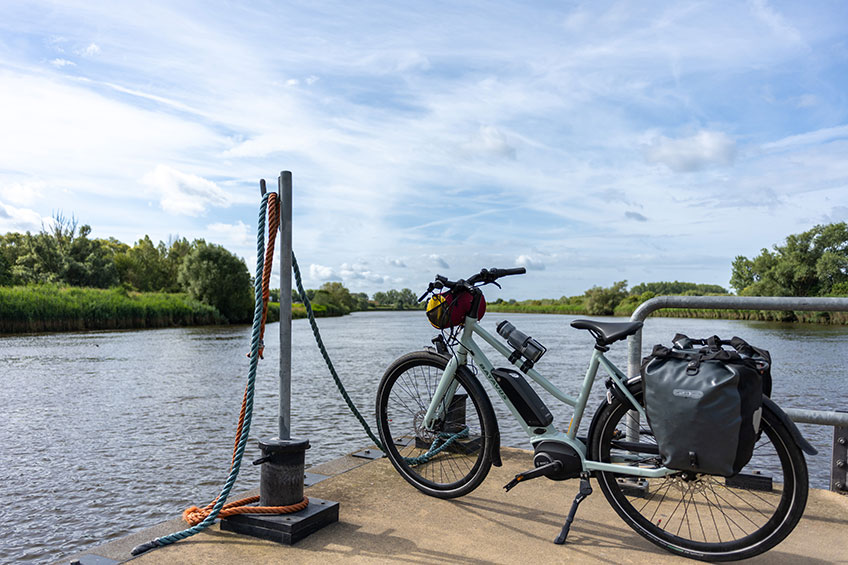
Despite the distance, the route is easy because there is hardly any slope, so again we can assure that it is suitable for everyone. We move on to Dendermonde, in whose Gothic church of Our Lady we can see two works by Van Dyck: The Adoration of the Shepherds (1631) and Christ on the Cross, a work from the Capuchin Monastery but preserved here since 1816 thanks to the government of Louis XVII decided to return some works of art stolen after the French occupation. A visit to Dendermonde, a relatively unknown locality, is surprising. Not only for finding these two magnificent works by Van Dyck in a church, but also for the small monumental ensemble formed by the Cloth Exchange, the House of Meat in the Main Square and its Belfry, a building recognized as a World Heritage Site by UNESCO.
Although if Dendermonde is known for anything it is for the legend of the horse Bayard and the four sons of Aymon, which has its origin in an epic poem of the Middle Ages, which has survived to this day in this Flemish town. It tells the story of the four sons of Aymon, lord of Dendermonde, who lived at odds with the emperor Charlemagne. The fight would be continued later by his sons, until the great monarch, after years of war and fighting, decided to give them an ultimatum: peace in exchange for his steed Bayard. The mighty and heroic horse would drown at the confluence of the Dender and Scheldt rivers, but every ten years he revives here, along with his four riders, to celebrate a triumphal parade through the city. In 2005, UNESCO added “Bayard’s steed” to its World Heritage List.
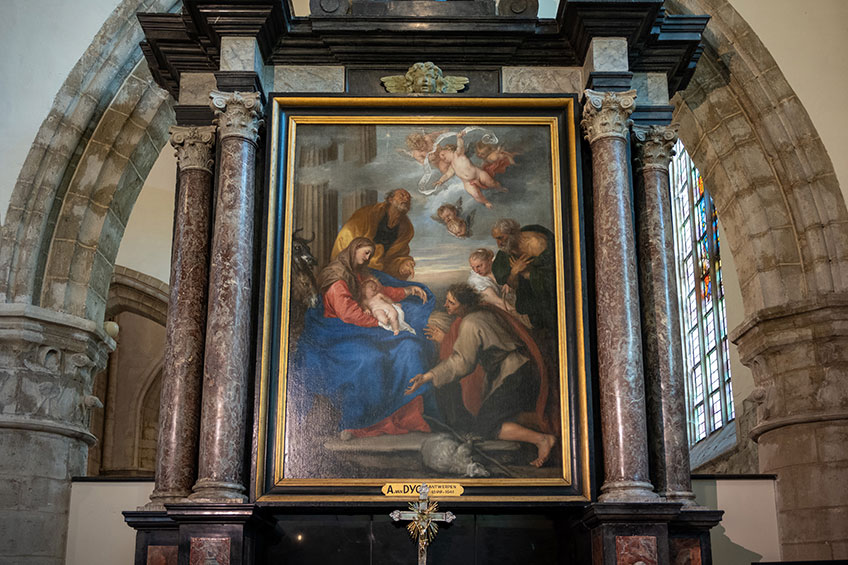
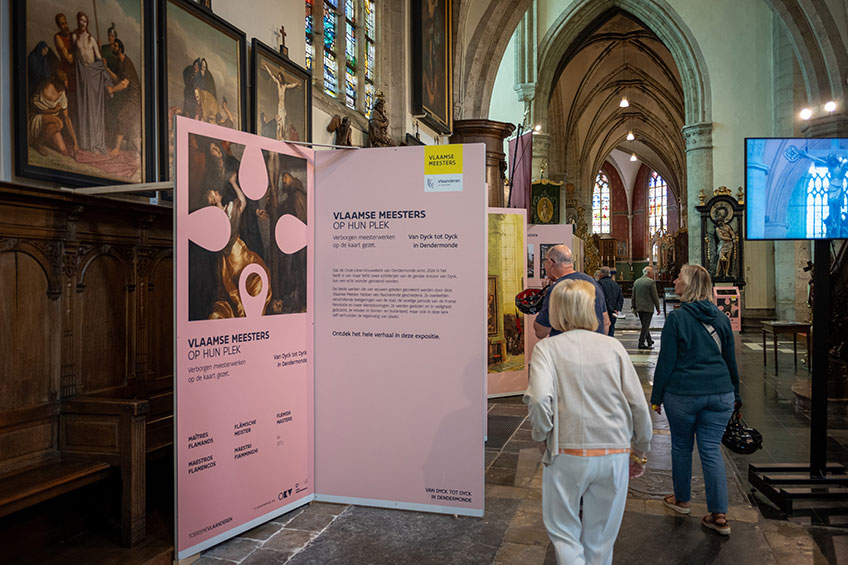
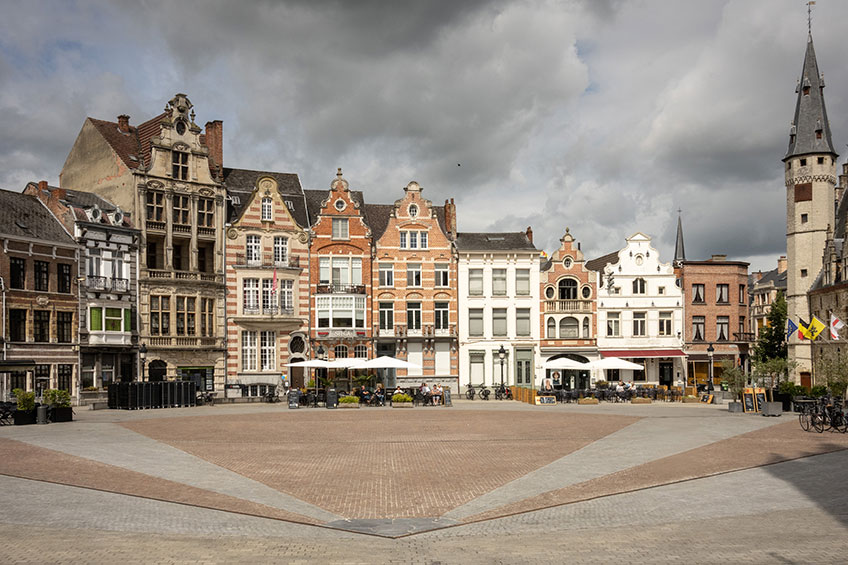
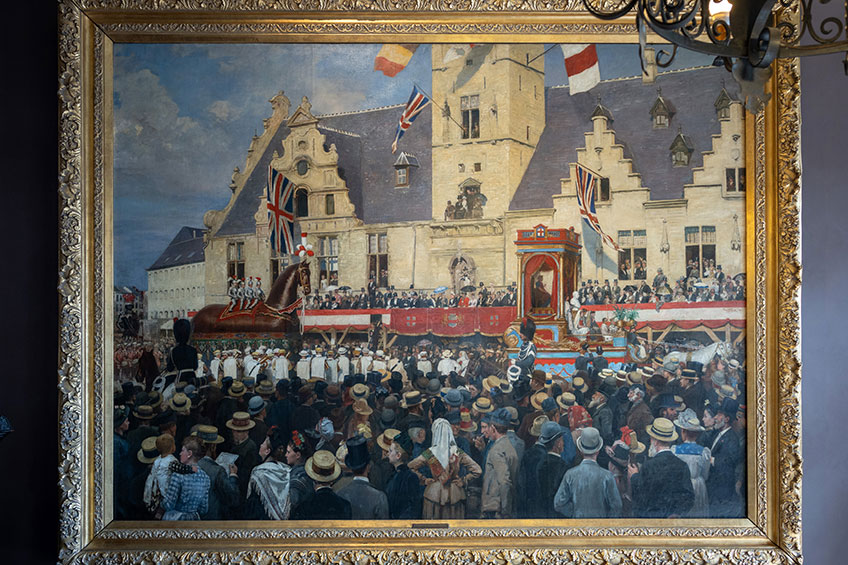
We continue our route and the Flemish Masters on site have another surprise in store for us before leaving the Dendermonde region. This time it has to do with a fundamental figure in the architecture and design of the 20th century. The former Baasrode-Noord station houses a large collection of historical railway equipment and during some weekends in the summer months the station becomes the starting point for a wonderful journey back to the early 20th century, which you can take on an authentic steam train. The interior of two of its carriages were designed by the famous Belgian interior architect Henry Van de Velde. Seats, hinges and locks, luggage compartments, canopies and lighting armor, which today, after a thorough restoration, are preserved as the first day.
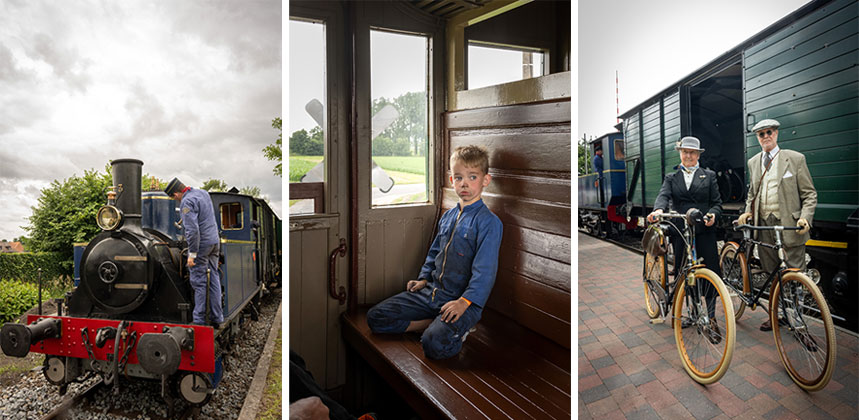
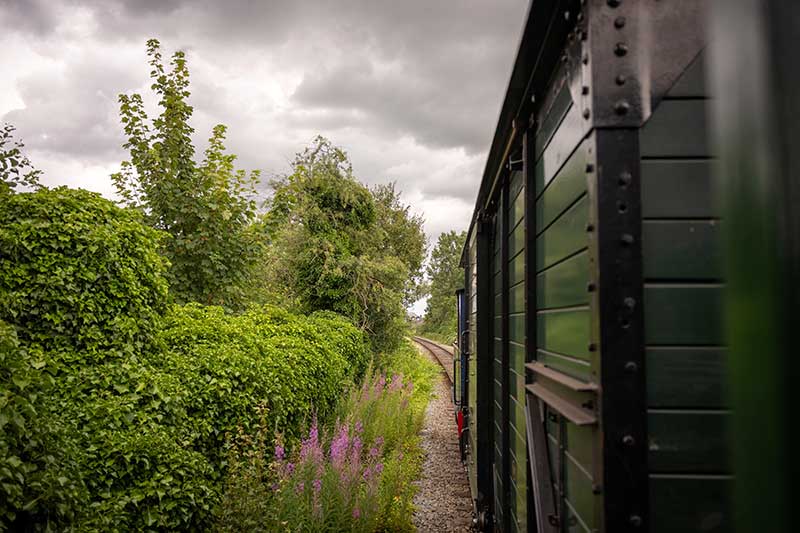
We still have one more stop before arriving in Antwerp: the Bornem Castle. It is a beautiful building surrounded by a huge garden, which has been changing its appearance over the centuries. The last reform, to which we owe its current image, was made by the famous Belgian architect Hendrik Beyaert, in the nineteenth century, commissioned by Ferdinand Jozef, eleventh Count of Bornem and his wife Adriana de Marnix. Its current owner, John II of Marnix, 14th Count of Bornem, has been managing the castle for more than 50 years and in 1985 he decided to open part of it to the public.
It is worth visiting it and discovering the treasure that is kept in one of its rooms: the largest private collection of Bruegel’s engravings, all of them first or second editions.
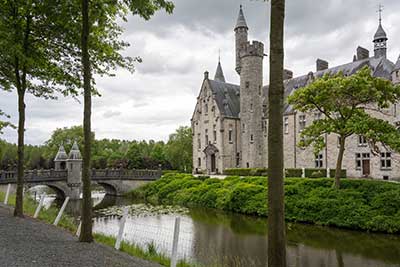
Now, a few kilometers separate us from Antwerp, which we will reach by sailing down the river aboard a waterbus that makes the journey along the Scheldt River and in which there is no problem to transport bicycles. Antwerp is a vibrant city full of art and culture, in which it is worth spending at least two days. On this occasion, we did not have so much time and we cycled through it, stopping only at a few points, since we had already had the opportunity to visit it before (we invite you to read our special on Antwerp). We could not miss the church of St. Paul, whose building dates from the sixteenth century and where you can see nothing more and nothing less than paintings of the three main baroque painters of Antwerp: Rubens, Van Dyck and Jordaens.
Another of our favorites is the baroque church of St. Charles Borromeo, located in the center and formed a pleasant square with the building of the Hendrik Conscience Heritage Library, where all the history of the city of Antwerp is collected. The church has in its interior the sublime Rubens Chapel, where you can contemplate The Return of the Holy Family.
And, of course, the Cathedral of Our Lady, a jewel of 123 meters high. You should not miss its pulpit, nor its stained glass windows, but above all you should spend some time to enjoy the view offered by the triptychs The Raising of the Cross, The Descent from the Cross, The Resurrection of Christ and the altarpiece The Assumption of Mary, all signed by Rubens.
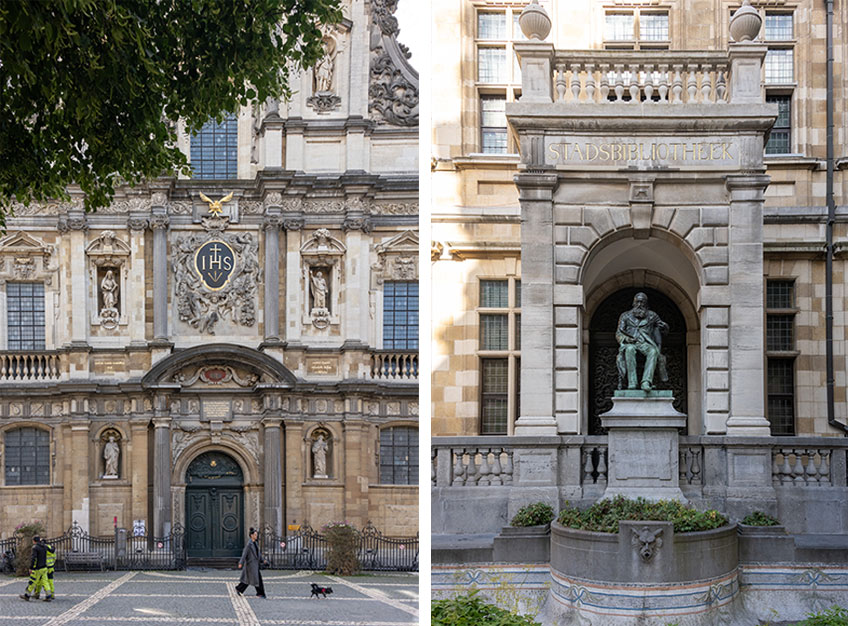
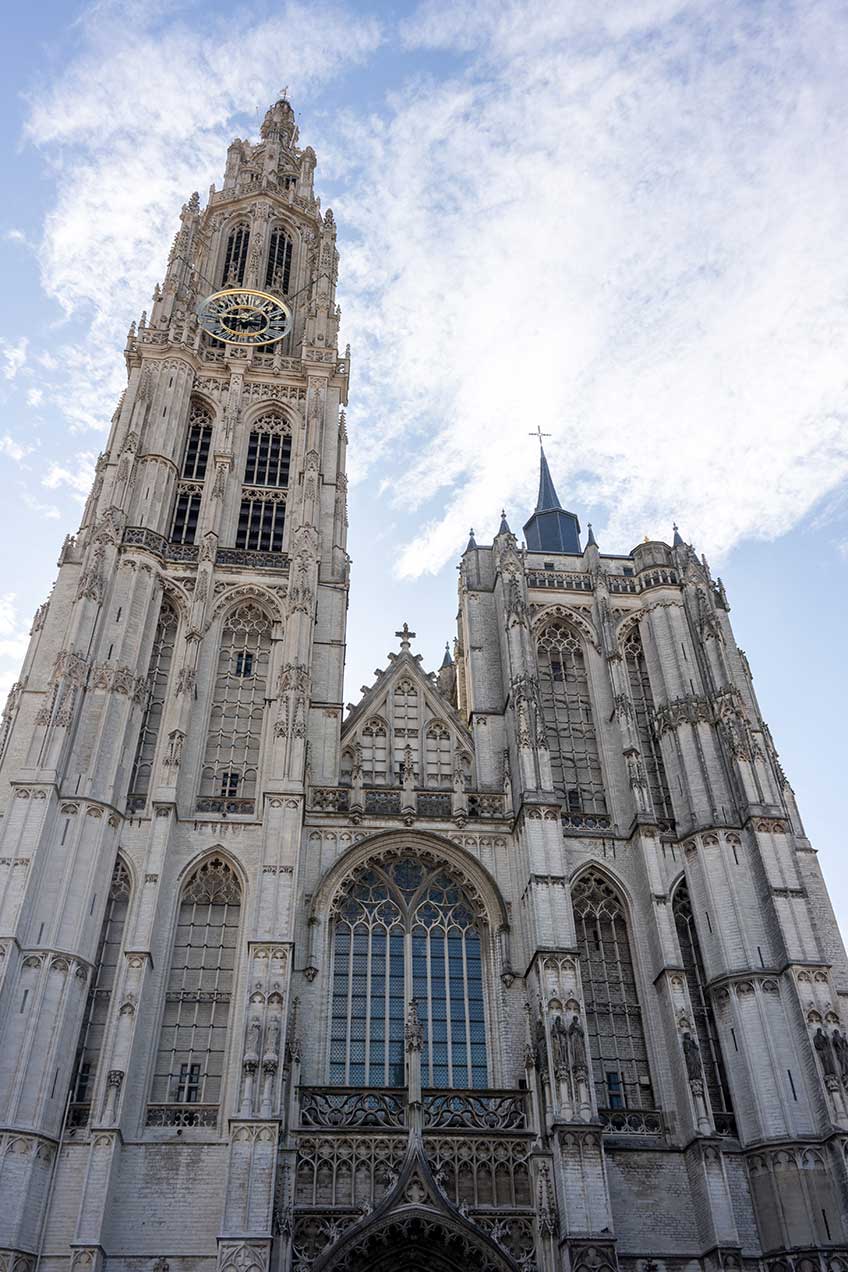
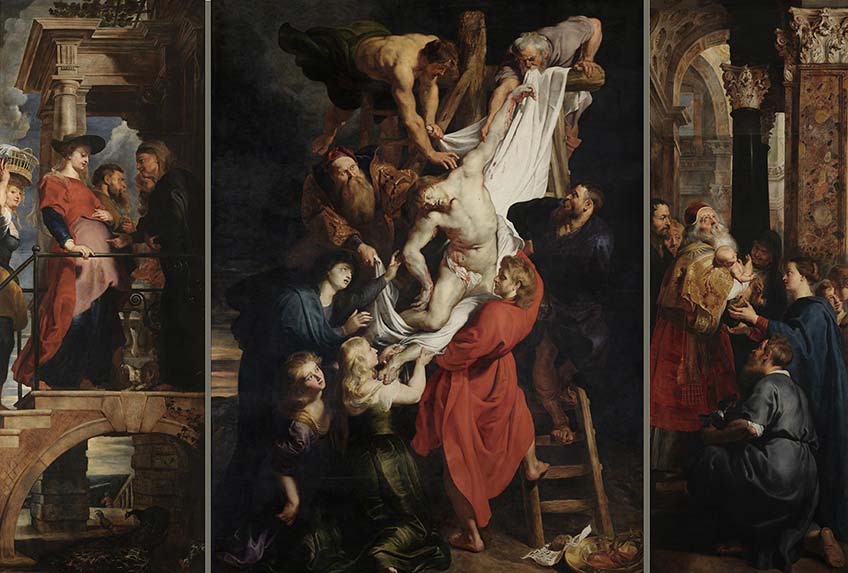
Although our goal on this trip was to discover the route of the Masters in situ, we did not want to miss a brief stop at the brand new KMSKA, or Museum of Fine Arts in Antwerp.
DAY 3: EN ROUTE TO MALINES
A new day dawns and after a refreshing rest we set off for Mechelen. The network of nodal routes for cyclists will take us through a beautiful landscape, this time along the Nete river, passing through the charming town of Lier (20 kilometers from the center of Antwerp). There you will find the former home and studio of the artist Oscar Van Rompay (1899-1997), which houses a selection of more than 50 of his drawings and paintings. It also highlights the Beguinage, from 1258, completely walled, which is accessed through a beautiful baroque gate. Lier is one of those places that do not usually appear among the most visited by tourists but it is worth a stop.
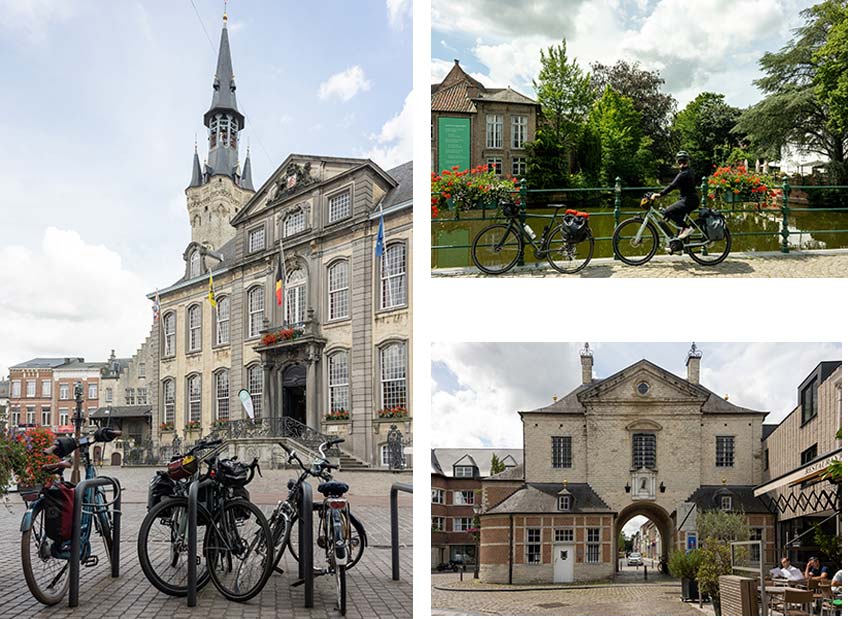
On resuming the route to Mechelen we are surprised to our right the neoclassical Castle Hof Van Ringer, owned by the internationally known and acclaimed Belgian fashion designer Dries van Noten. Only 15 kilometers separate us from Mechelen. In this stretch, the soil and landscape gradually changes from clay to sandy, and from wet to dry, resulting in a landscape with a great variety of plants and trees that make the ride surprising until finally entering a strikingly wooded area.
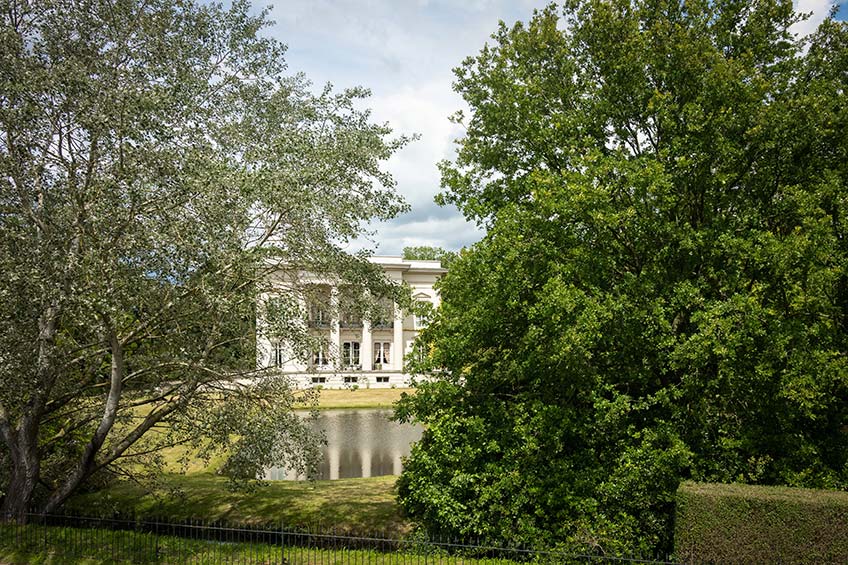
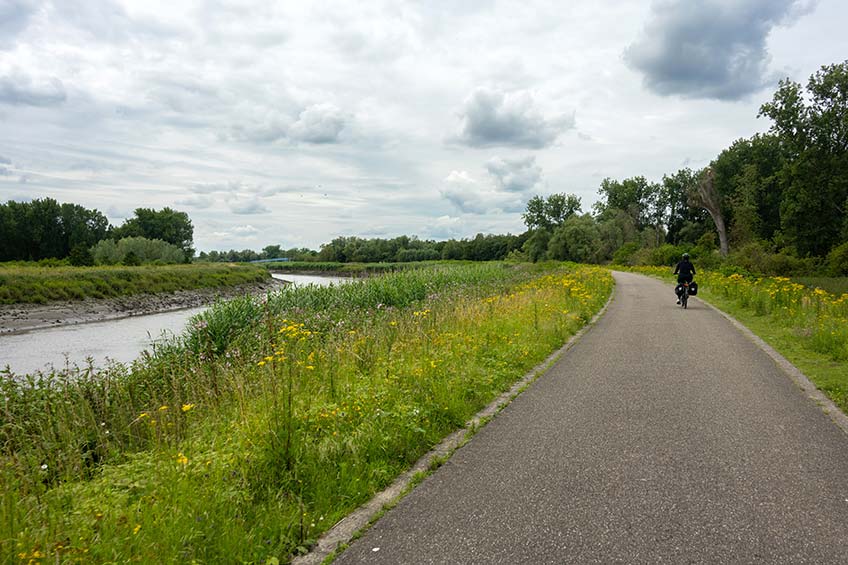
We arrived in Mechelen, historic city, known for having been in the sixteenth century the capital of the Burgundian Netherlands; the Court of Margaret of Austria and the place where the Emperor Charles V grew up and was educated. Today, moreover, adapting to the times, it can boast of being one of the most sustainable European cities, deserving of the title European Green Leaf City in 2020, and having been declared Cycling City of Flanders in 2022.
Our first visit is to the St Rumbold tower, from the top of which, at 97 meters high (and many steps away from the base!), we get fabulous 360º views of the city, and well beyond. During the ascent we learn about the history of this emblematic cathedral tower, explained in each of the six different chambers, each with its own function. Starting in the fall of 2024, an immersive project will be presented to take the visit experience to another level.
Another of the points marked on our map was the Church of Our Lady on the Dijle, inside which is preserved The Miraculous Catch of Fish by Peter Paul Rubens. The painting was commissioned by the guild of fishmongers, which is why, in the central panel, several burly men, in the purest Rubens style, are seen catching fish. The church houses other outstanding works of art, such as The Burial by Theodoor Rombouts (1597-1637), Antwerp’s most important Caravaggist painter, and The Last Supper by Jan Erasmus Quellinus (1634-1715).
We continue with a quick stop at the Jesuit Church of St. Peter and Paul to see the spectacular pulpit of Hendrik Frans Verbruggen, descendant of a prominent lineage of Antwerp sculptors. Made of oak wood, around 1700, the pulpit is conceived as a work of large carving, surprising for its delicacy. In the lower part, the human figures on a terrestrial sphere represent the four worlds known up to that time. They are, in turn, holding the pulpit tribune, adorned with the attributes of the four evangelists and four medallions with effigies of evangelist saints.
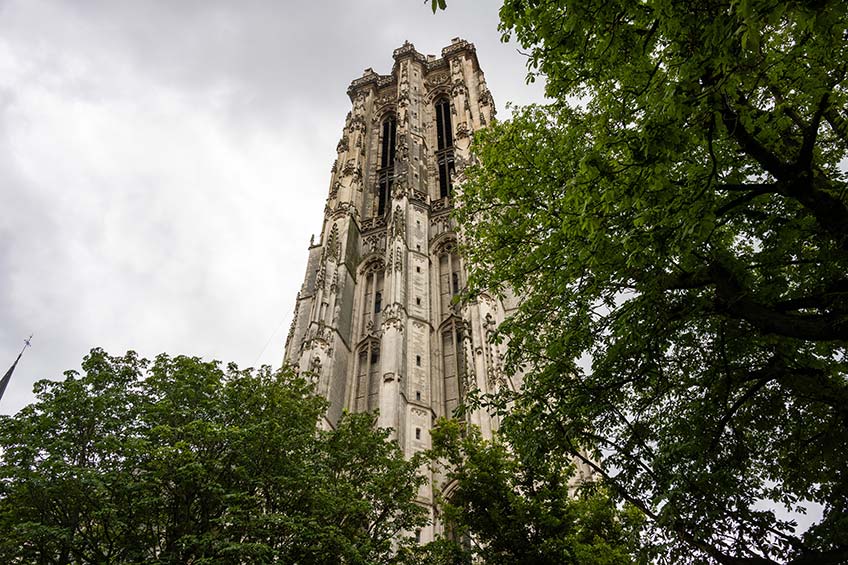
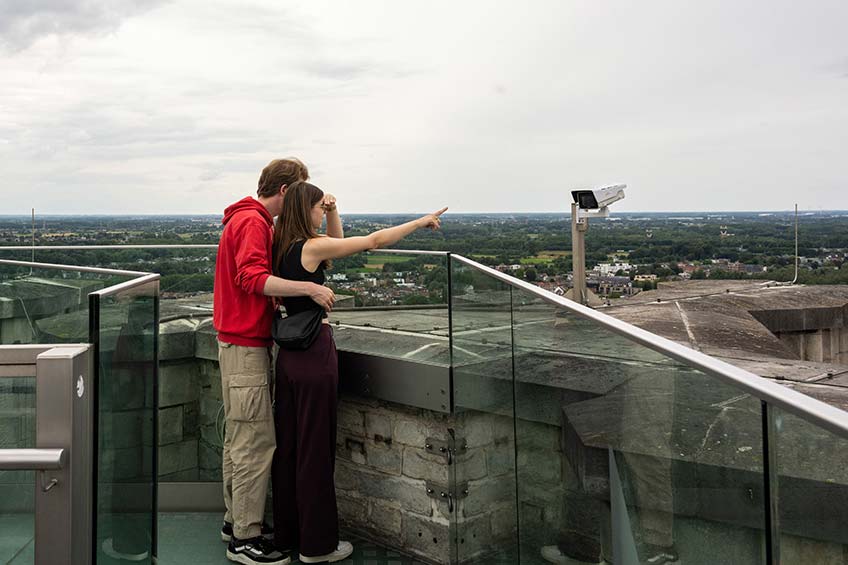
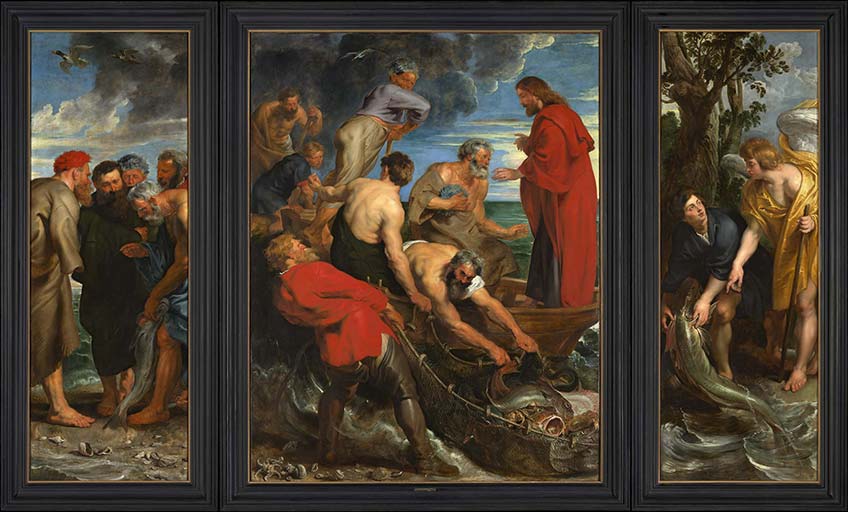
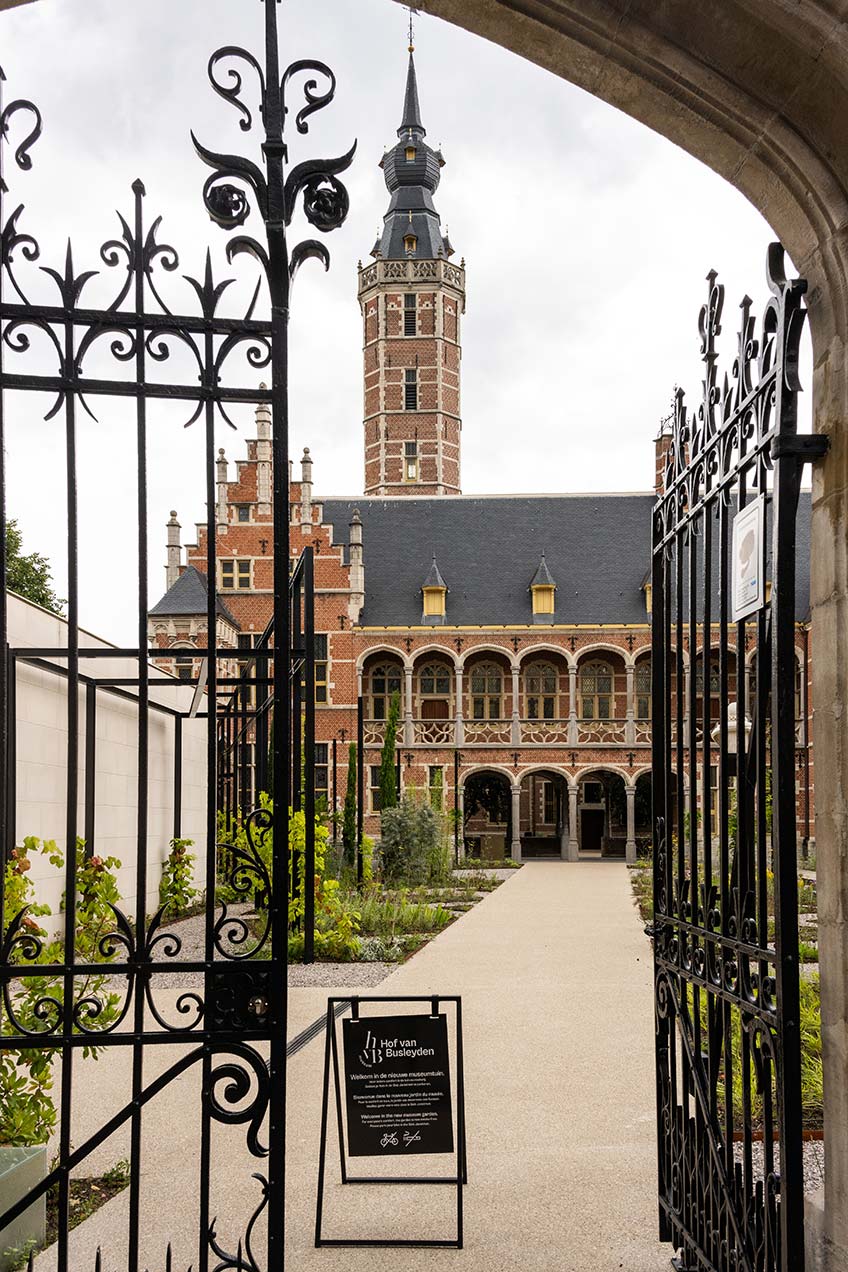
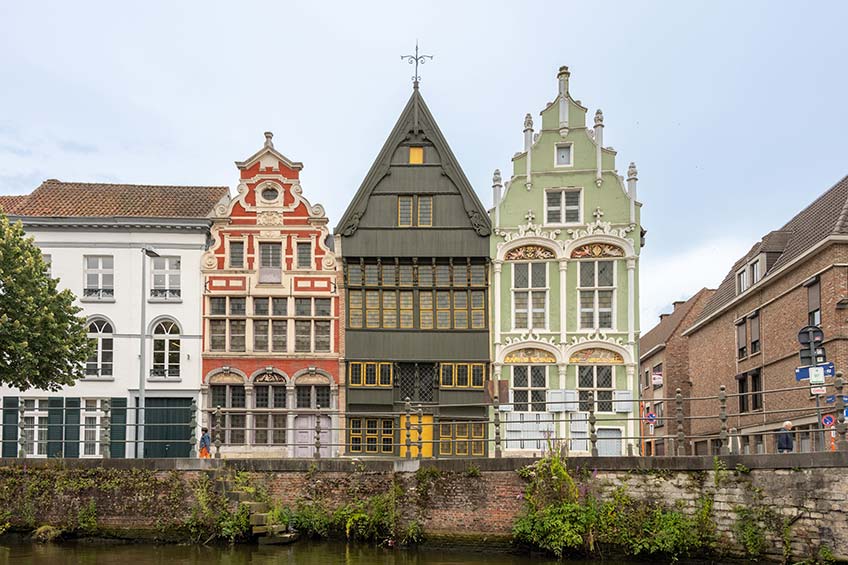
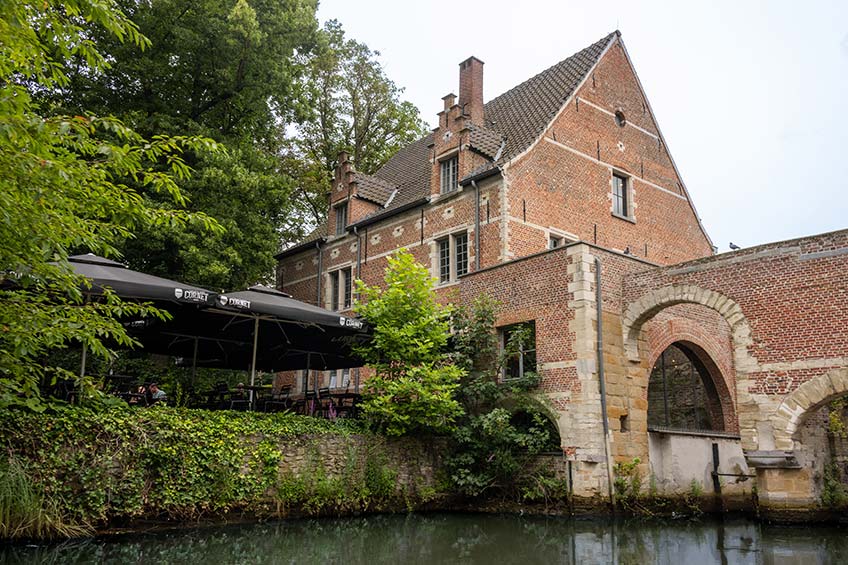
Also highly recommended is a visit to the Hof van Busleyden Museum, where wall paintings by Jan van Roome (1498-1521), a well-known tapestry painter of the Flemish School, are kept. Apparently, those paintings, biblical and mythological scenes such as The Banquet of Tantalus and The Fall of Phaethon, were praised by great intellectuals and thinkers such as Thomas More and Erasmus.
If you have time, you can park your bikes for a while and explore the city from another point of view, that is, from the water, on one of the boat trips along the Dijle. Although the city maintains its medieval essence, with more than 300 listed historic buildings, its innovative spirit and commitment to sustainable development can also be perceived.
Considered a monument of the city, the historic Het Anker brewery, whose Gouden Carolus has been recognized with several awards, is our last stop of the day…
DAY 4: WE ARRIVE IN LEUVEN
Leuven is one of those destinations that we can consider almost perfect. A university city, vital, creative, traditional but at the same time contemporary and in full development, with just the right amount of bustle and of a medium size, easy to walk or cycle around.
We arrived there with three mandatory stops marked on our map: a visit to the Botanical Garden, the oldest and one of the most beautiful in Belgium (we had to check it out and we were not disappointed); the large Beguinage (although we also visited the Small Beguinage), a unique place with its cobblestone streets and picturesque brick houses, and, of course, the church of San Pedro and its surroundings with the imposing Gothic building of the Town Hall and the 235 sculptures adorning the niches of its facade.
There is one figure who has recently put Leuven back on the route of the great Flemish masters: Dieric Bouts. His paintings The Last Supper and The Martyrdom of St. Erasmus are two jewels that are still on display in the church of St. Peter, the place for which they were originally painted in the mid-fifteenth century. The church also preserves other interesting works and we recommend a detailed visit to the church. There is the option of a virtual tour with a holographic device, developed by the M Museum together with the company Studio Louter, which offers spectacular 3D images and animations of the church and its treasures.
We still had time to stroll through the streets surrounding the University, visit the large reading room of the University Library and approach the M Museum, a unique building designed by Belgian architect Stéphane Beel and whose collection spans several centuries, from the old masters to contemporary creators.
Our day ends at De Hoorn, an emblematic space in the Vaartkom district where the first Stella beer in history was brewed in 1926. Today it no longer houses the brewery but workspaces, presentation rooms, a bar and a restaurant. A place frequented by Leuven’s creative and artistic community that is contributing to the development of this former industrial area where buildings are being rehabilitated and converted into housing, stores and offices.
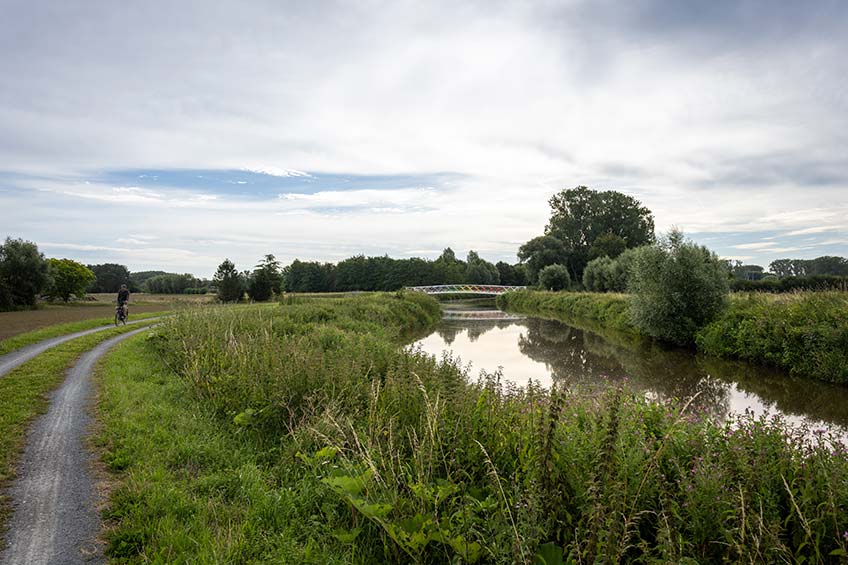
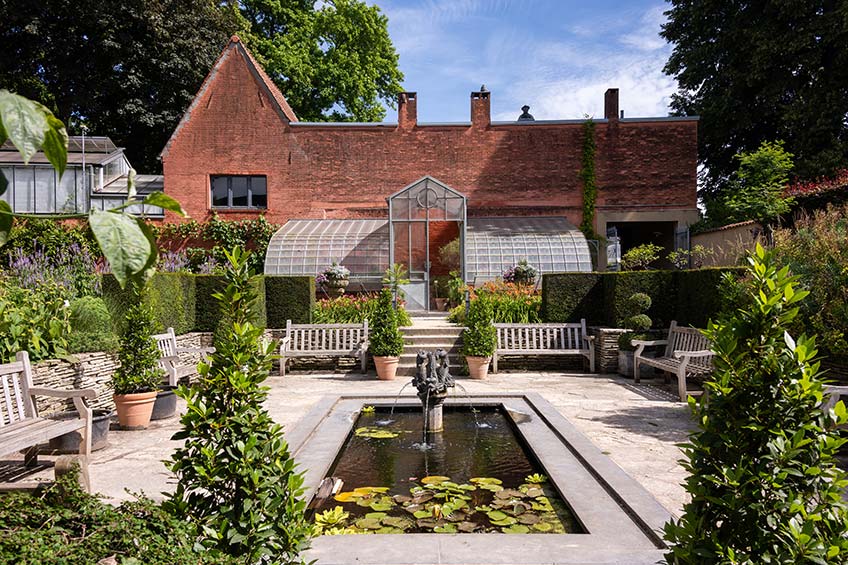
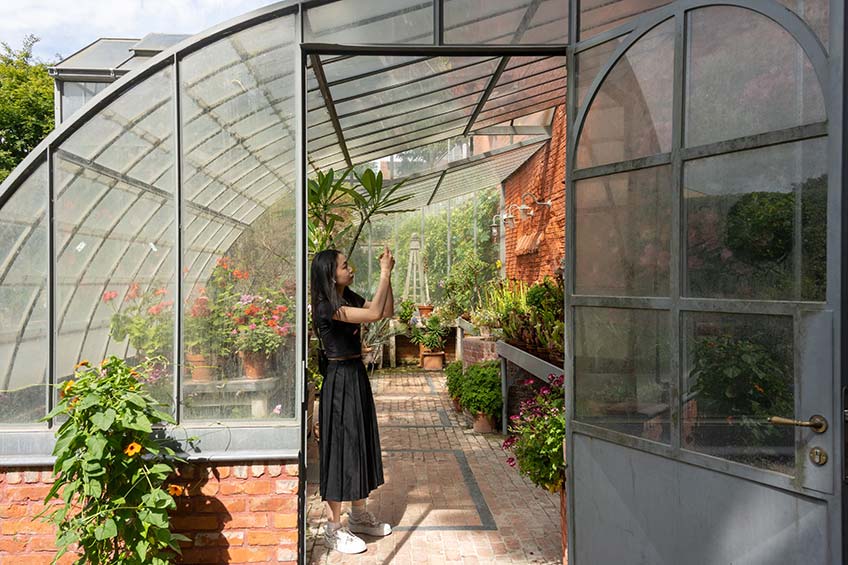
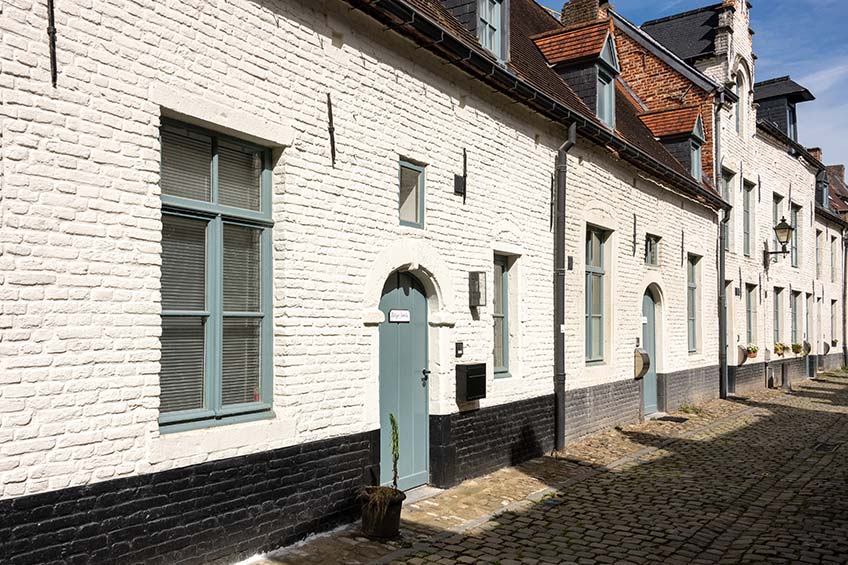
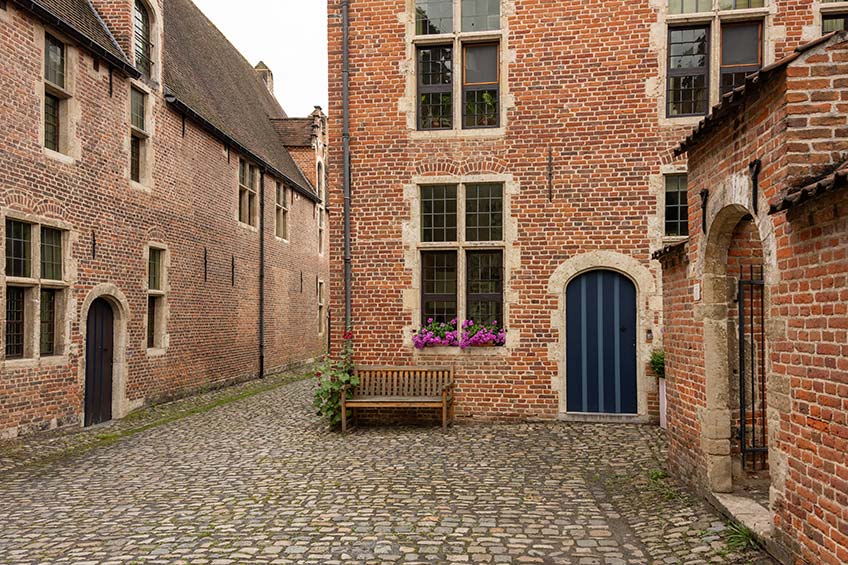
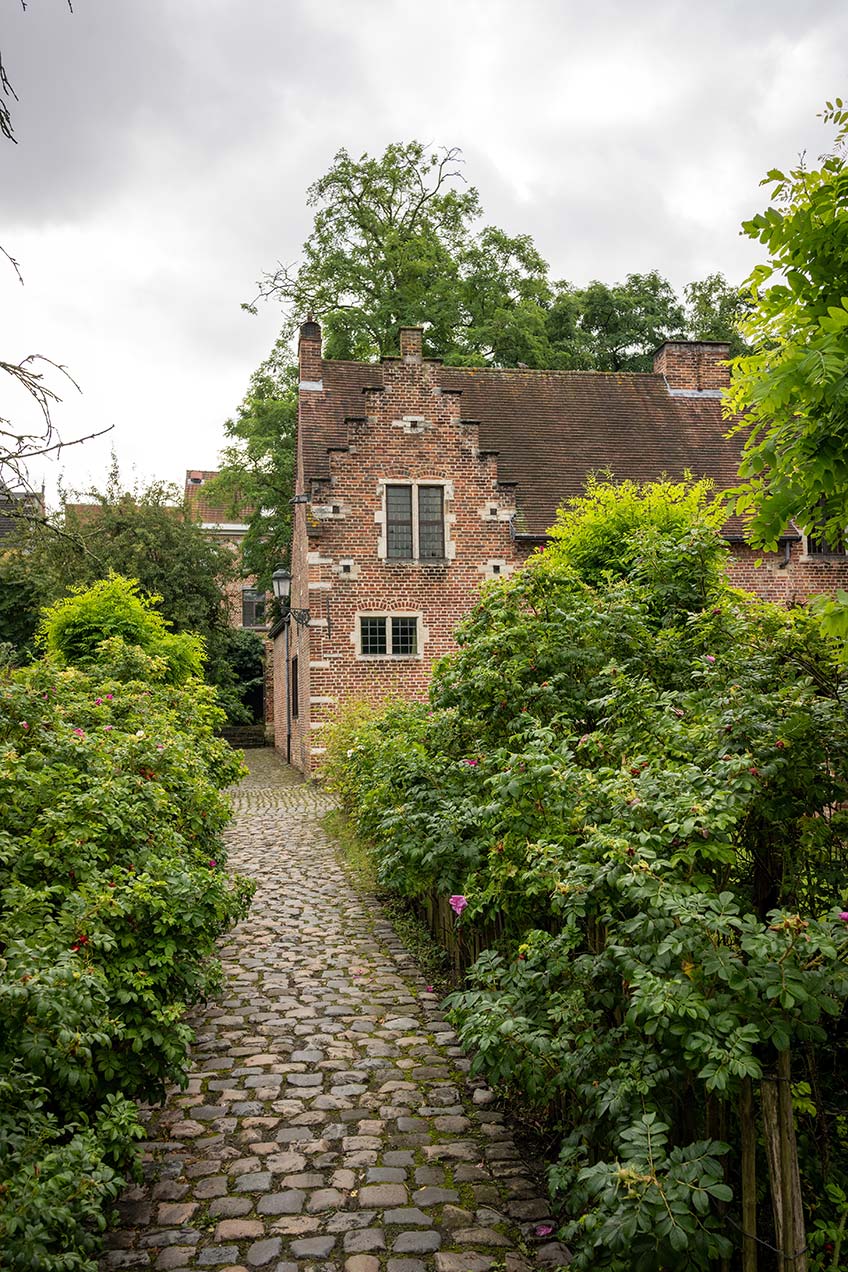
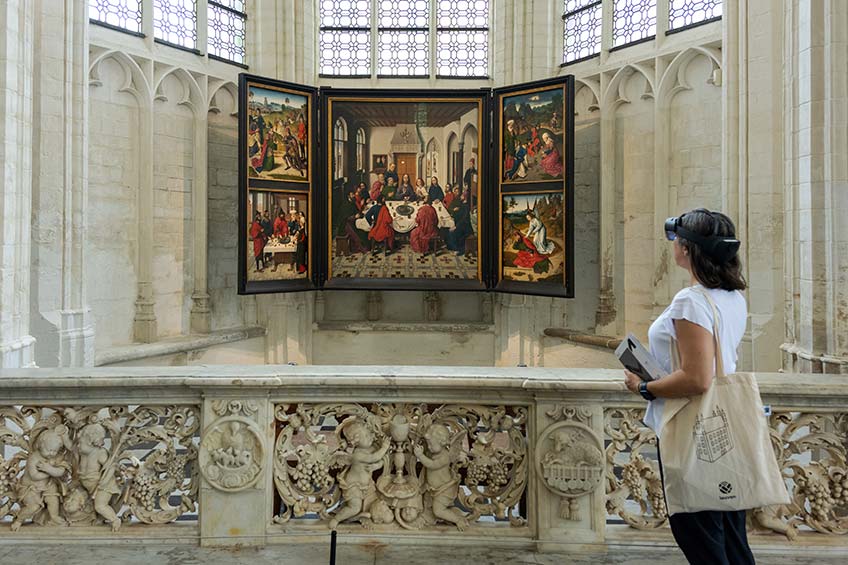
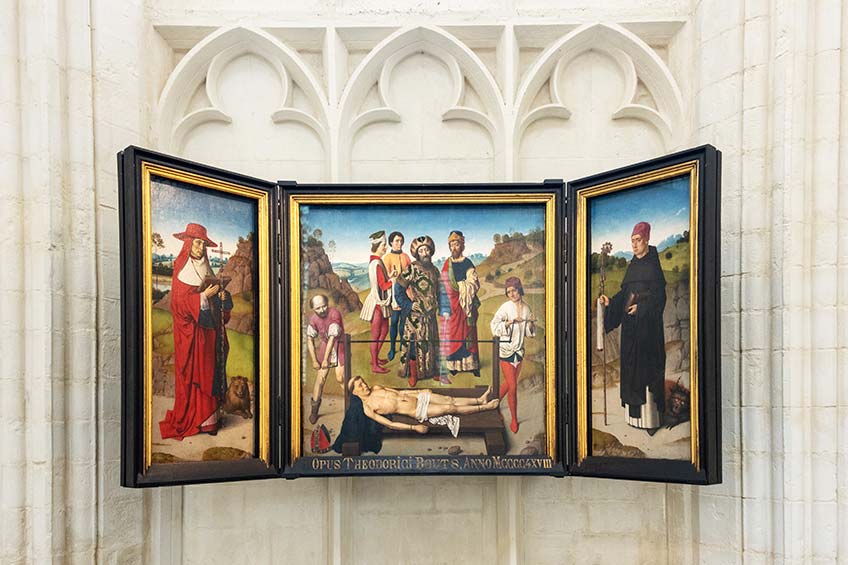
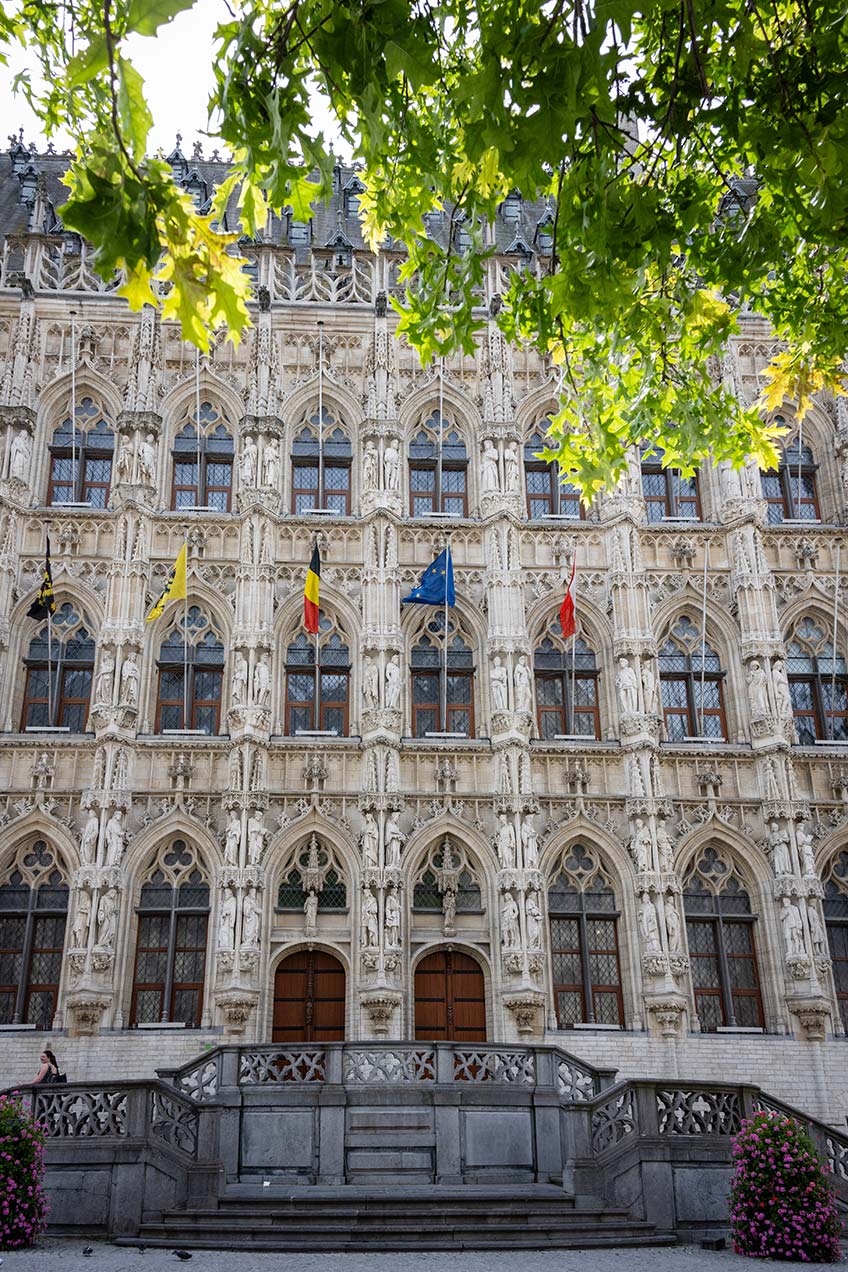
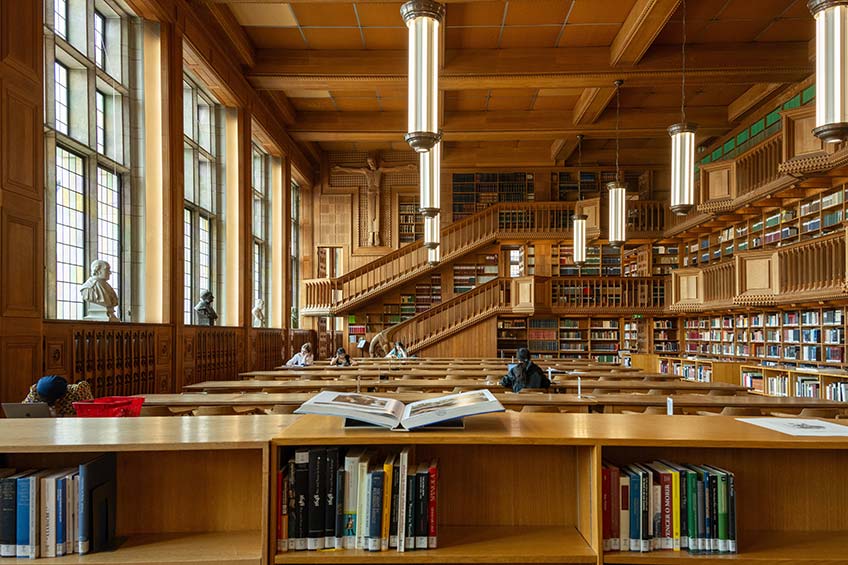
DAY 5: DESTINATION BRUSSELS
In the morning, before saying goodbye to Leuven and heading to Brussels, where we will end our trip, we will tour the surroundings of Park Abbey, a fantastic complex, one of the best preserved in Western Europe, covering an area of 42 hectares, with numerous open spaces for walking or cycling. Home to the Norbertine fathers since 1129, the abbey has managed to preserve its authenticity and the surrounding buildings, such as the farmhouse, the water mill, the church and cemetery, the porter’s lodge, the tithe barn and even the fishing ponds, which have remained virtually unchanged since the 17th century. Immersed in a major restoration campaign that will run until 2025 in collaboration with the city of Leuven, and within a sustainable reuse program, several spaces have been converted to have a contemporary function without departing from their historical context. This is the case of the PARCUM museum, the Alamire Foundation (the center for polyphonic music studies at KU Leuven), Abbey Farm (an association of several partners working in organic urban agriculture) and the abbey’s brewery, Braxatorium Parcensis.
Inside, the monastery preserves treasures such as the spectacular stucco ceilings of the library and the monastery refectory by the craftsman Jan-Christian Hansche; or the 20 stained glass windows made for the cloister corridor by the Leuven master glazier Jan de Caumont, between 1635 and 1644.
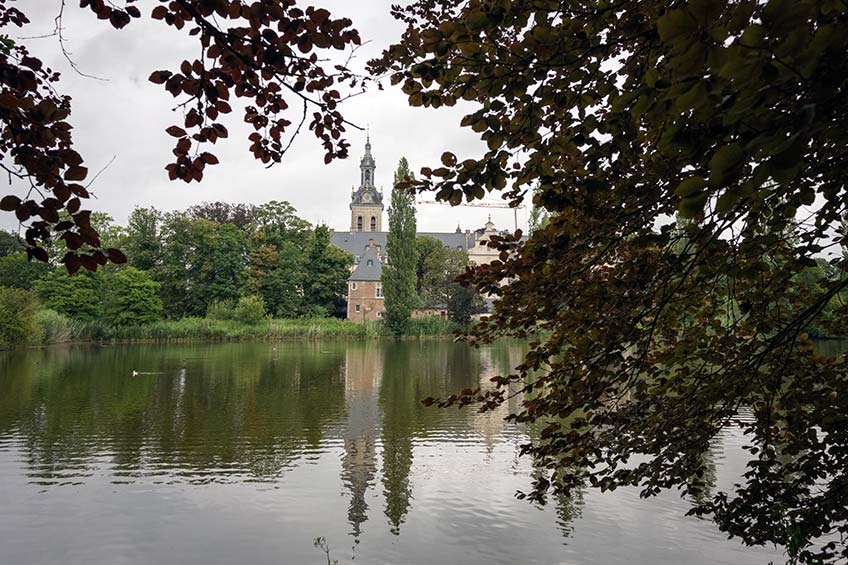
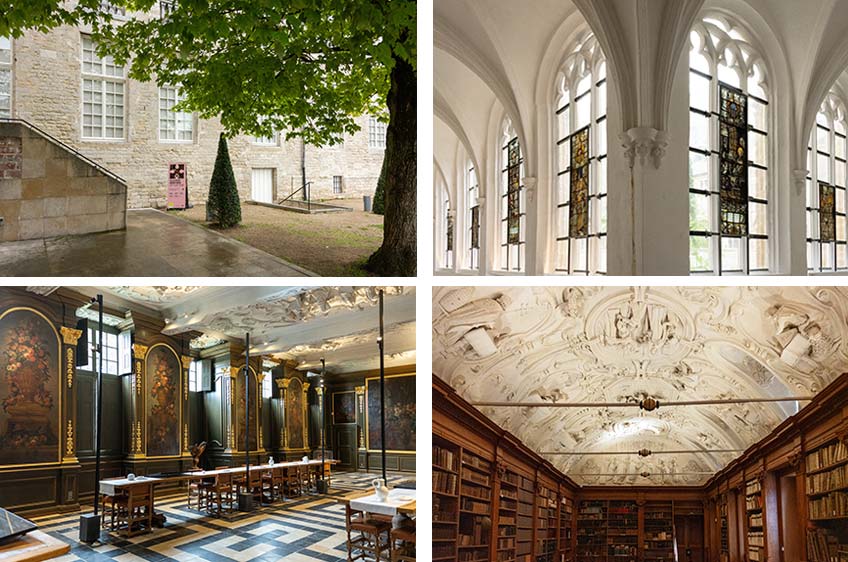
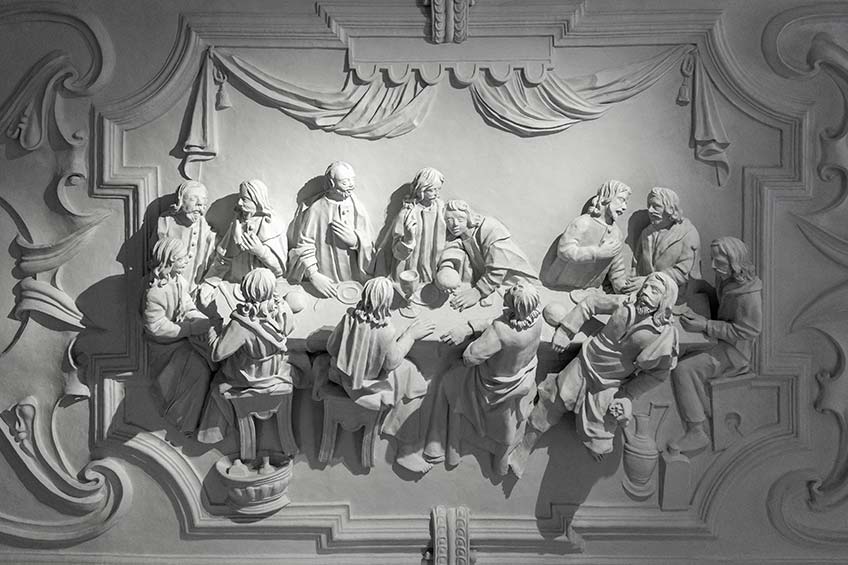
A few kilometers from there, already on the route that will take us to Brussels, we passed by the monumental Arenberg Castle, which retains its original form of the sixteenth century and is now home to the campus of exact sciences of the University of Leuven. We leave it behind to enter an area of trails of great natural beauty, especially when crossing the area of Leefdaal, in which also the homonymous castle.
In the small town of Vossem we found —in our case, by chance— a must stop for cycling lovers: the official fan club bar of Renko Evenepoel, a national and international star, and brand new winner of two gold medals at the Paris 2024 Olympics.
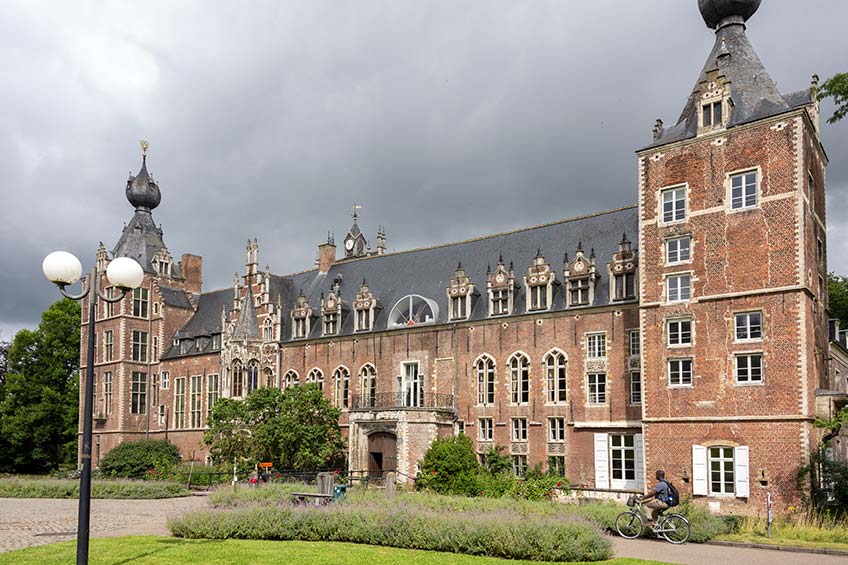
Another great surprise is what we discover when we arrive at the impressive gardens of the Africa Museum, built by King Leopold II as a showcase of what for him was “his” colony of the Congo. Built by Stéphane Beel, if you remember, the same architect of the M Museum in Leuven, the building was rehabilitated in 2018.
We are only 14 kilometers away from Brussels, but before arriving in the capital we still have one more stop in search of a Van Dyck; specifically the one in the church of St. Martin in Zaventem. This beautiful painting depicts the charity scene of St. Martin sharing his cloak with a beggar and was made by a young Antoon van Dyck, who was then working closely with Rubens.
After cycling for several days through the wonderful infrastructure that connects the cities we have passed through, it is true that the arrival in Brussels is a little more chaotic and a little less bike-friendly, so our recommendation is to park the bikes, once installed in the city, and explore it on foot.
In Brussels we had to choose very well our visits and we were clear about the four things we did not want to miss on our route of Flemish Masters in situ, starting with the church of Our Lady of the Chapel, where the tomb of Pieter Bruegel is located. In the seventeenth century it housed three paintings by Rubens and his workshop, although today only the copy of one of them, Christ Handing the Keys to St. Peter, whose original had been made around 1613-1615 at the request of his friend and colleague Jan Brueghel the Elder to decorate the memorial tablet of his parents, Pieter Bruegel the Elder and Maria Coecke van Aelst, is preserved there. The painting was sold in 1765 but the buyer offered a beautiful copy, which is the one that can be seen today in the church.
The baroque church of Our Lady of Good Hope, which features an imposing high altar, made partly of marble and partly of painted wood, following a design by the Antwerp sculptor Jan Pieter van Baurscheit the Elder.
The church of St. John the Baptist, located in what was once the Beguinary of Brussels and inside you can see several paintings by Theodore van Loon, Baroque painter of Caravaggist influence. Among them is the image of Saint Ursula crowned by the Child Jesus. In 1622 he also painted a magnificent Assumption of Mary for the main altar, a work that is now in the Royal Museum of Fine Arts in Belgium. In addition, a sixth painting, Salome with the head of John the Baptist, was stolen in 1973.
And finally, we went to Sablon, the antique district of Brussels. There, on the Grote Zavelplein, stands majestically the church of Our Lady of Victory, rebuilt in the fifteenth century by the guild of crossbowmen of the city following the fashion of Bravantine Gothic. A favorite place of Margaret of Austria, ruler of the former Netherlands, for prayer, its chapels house numerous paintings and sculptures, although the one we are most interested in is not inside any of them but hanging on one of the pillars of the transept. Recently attributed to the Antwerp painter Abraham Janssens, contemporary and rival of Rubens, it represents Mary, with a sorrowful gesture, holding in her lap a joyful Jesus playing with his cousin John.
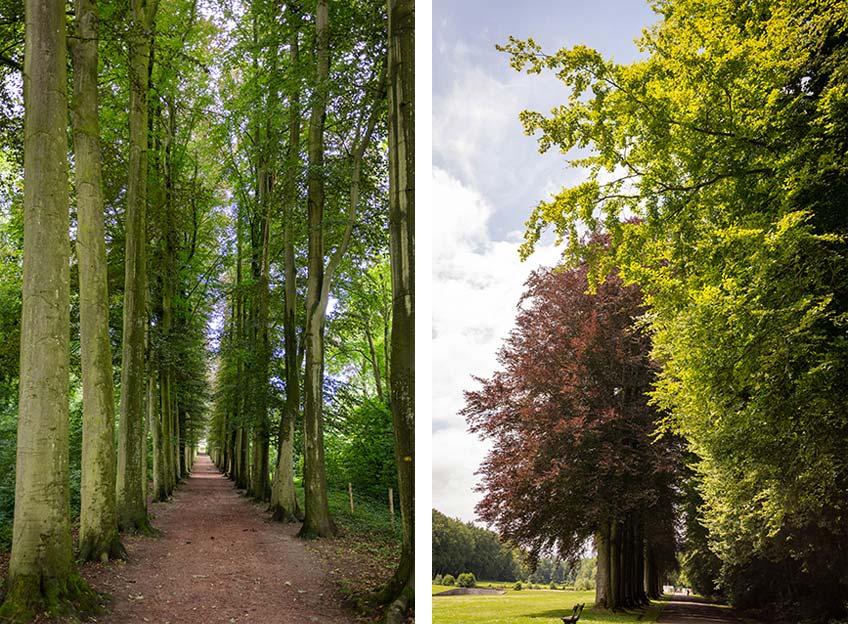
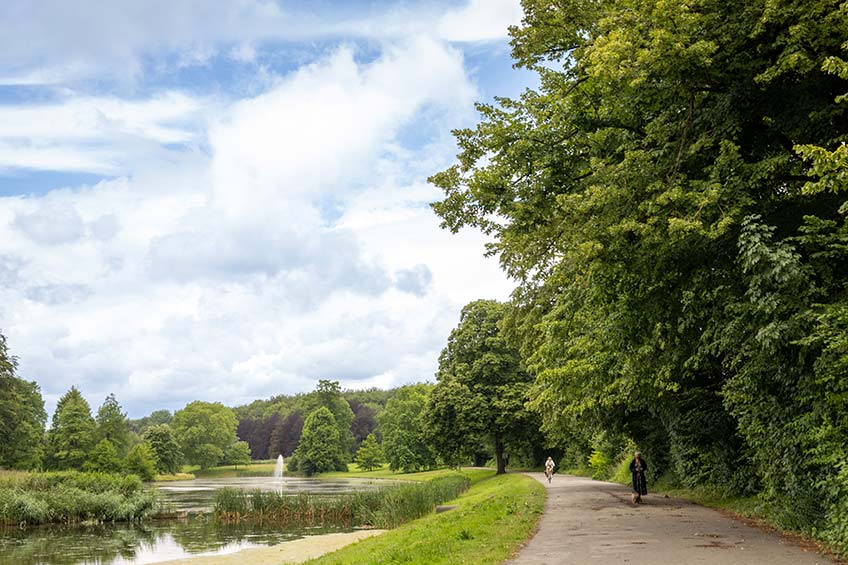
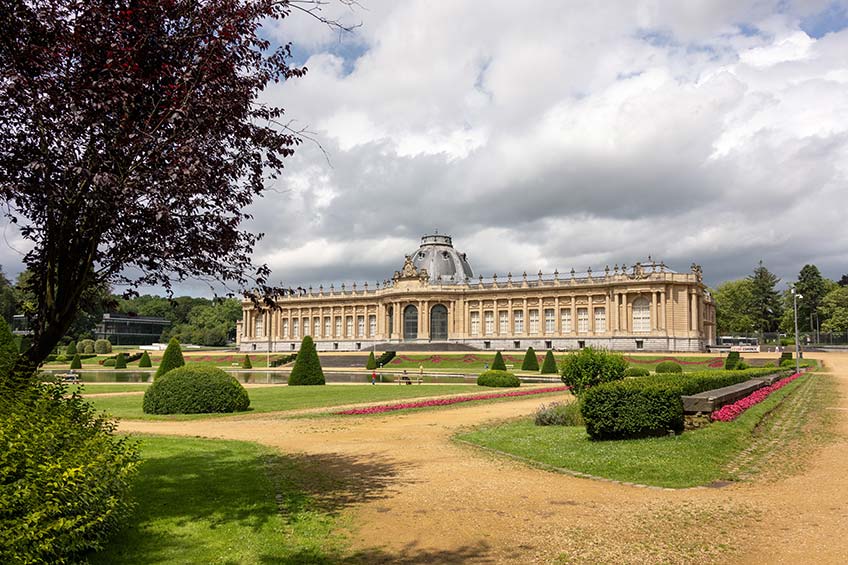
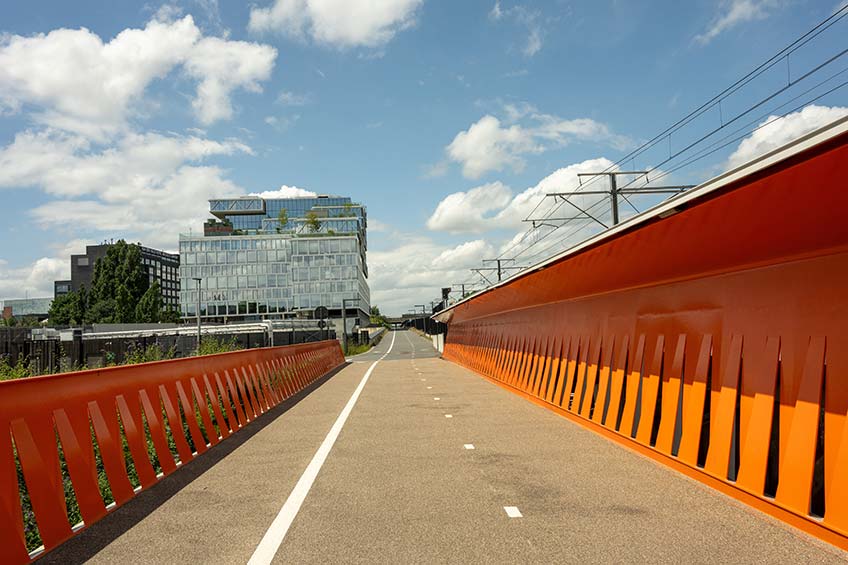
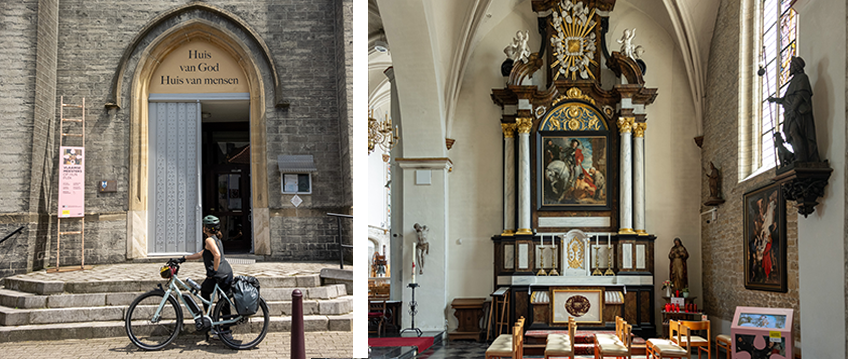
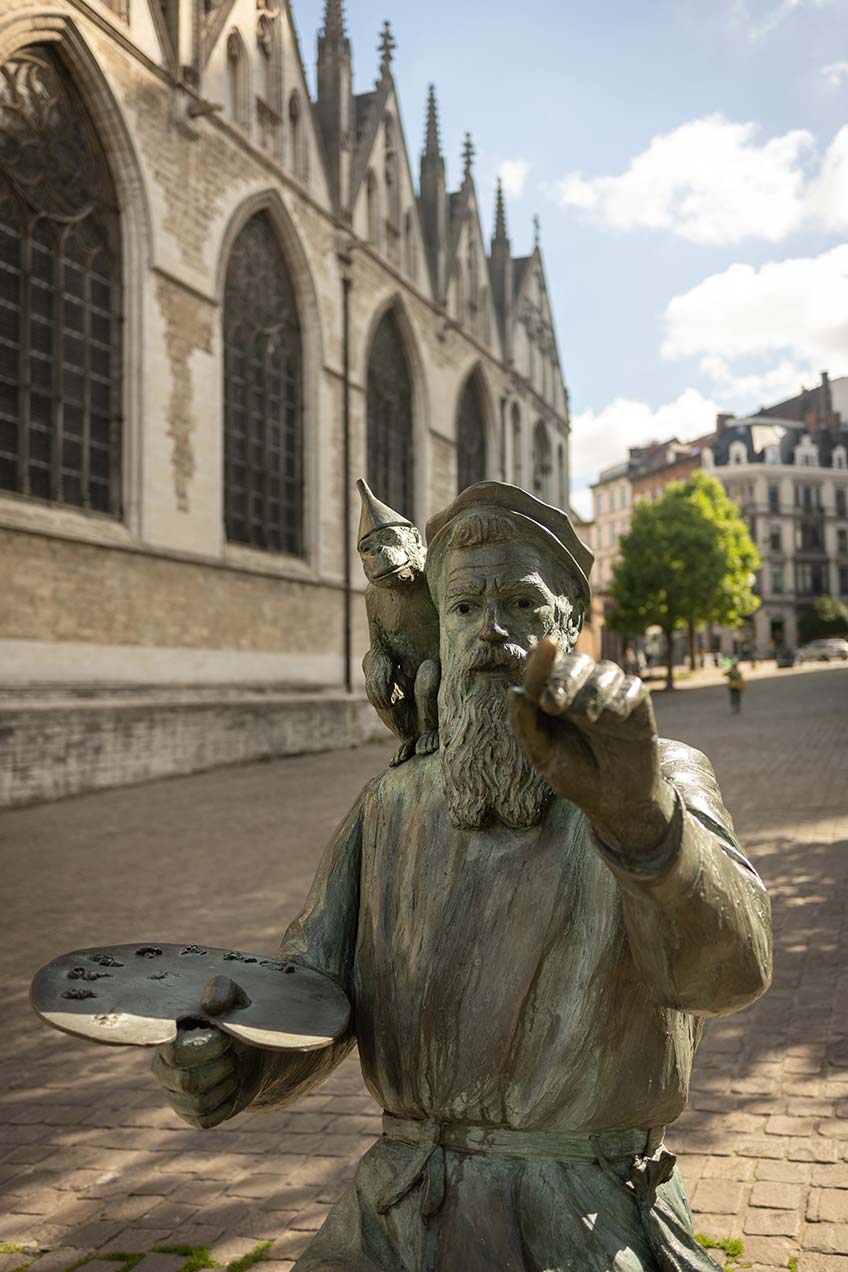
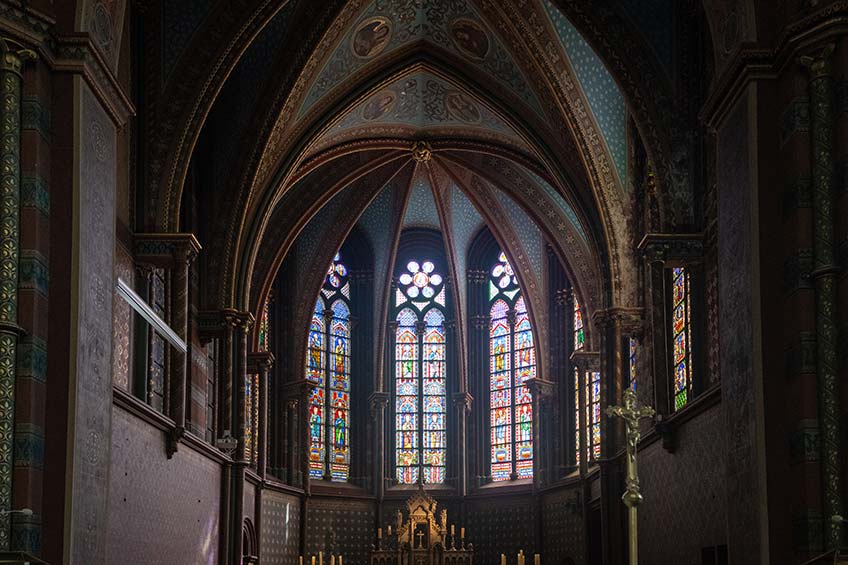
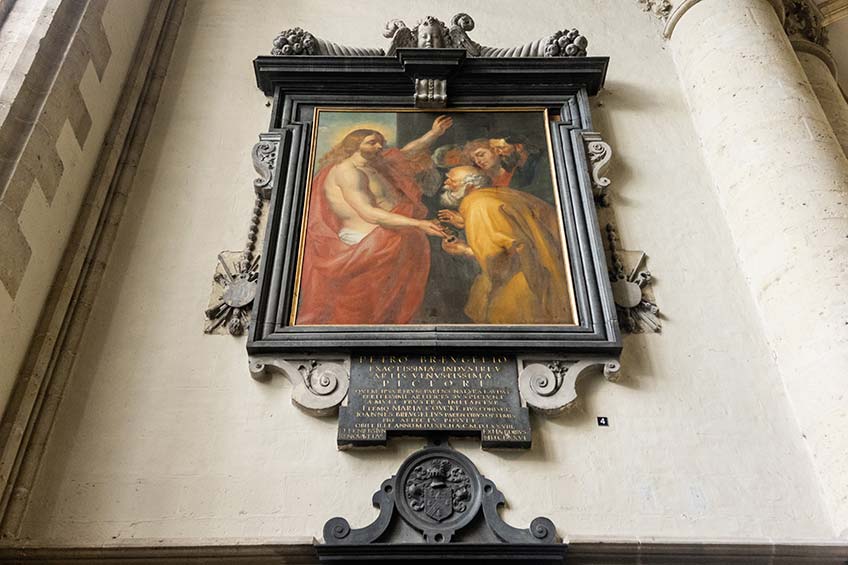
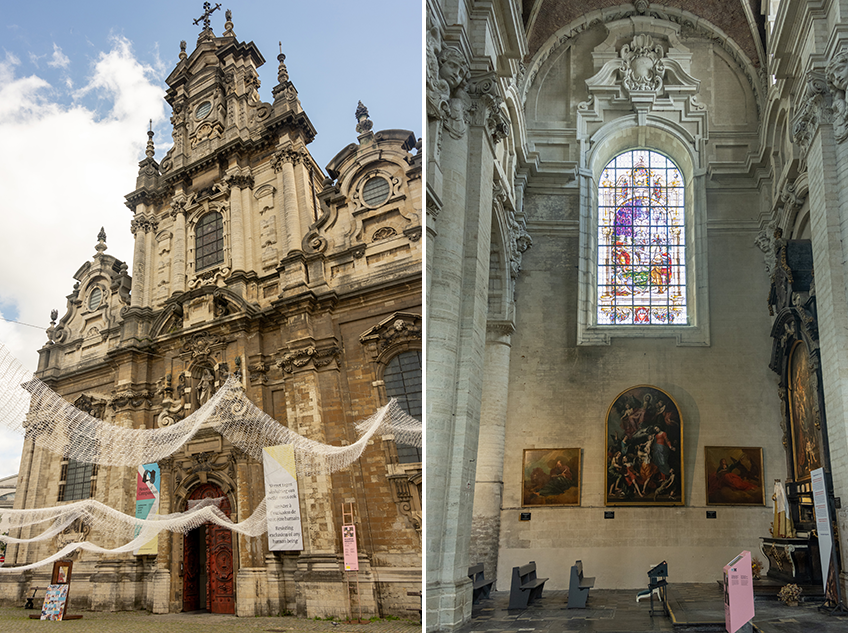
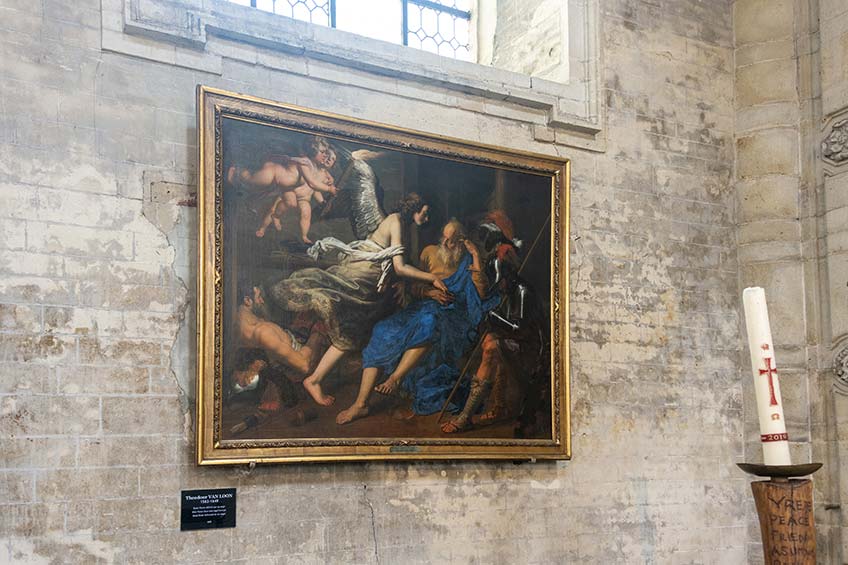
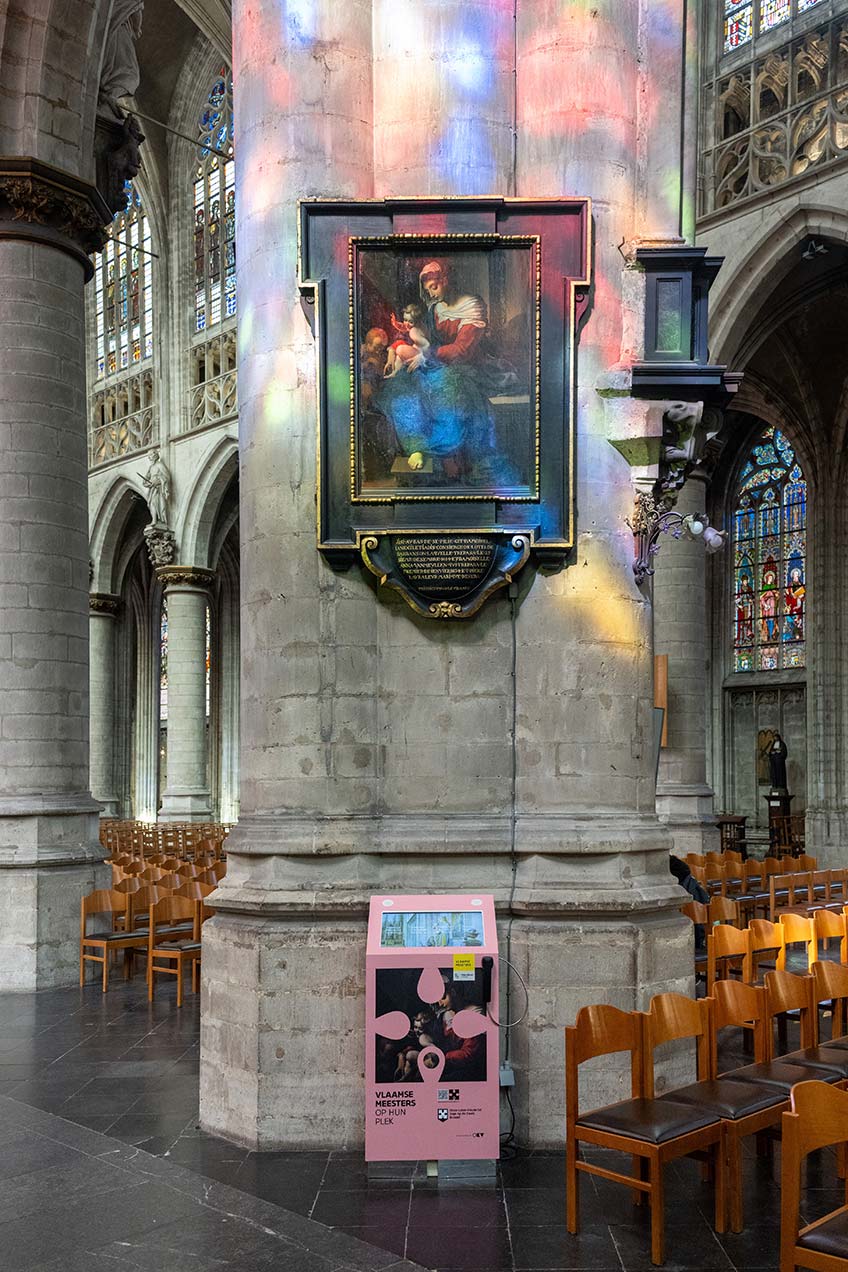
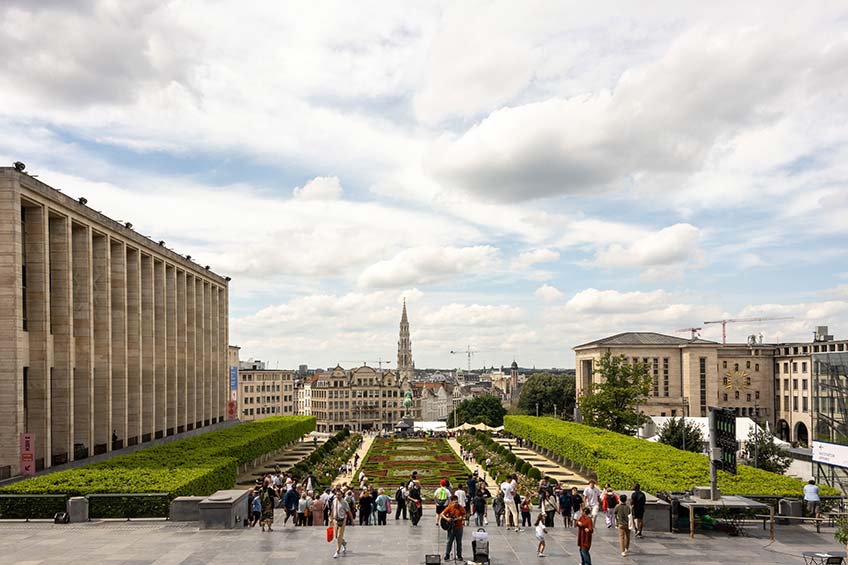
It was a pity, but it was time to pack up and start the trip back home, knowing, of course, that we will surely return to make new cycling routes and continue discovering the rich heritage of this region.
We hope to awaken in many of you the desire to make this kind of trips in which culture, sport, nature and gastronomy come together. Flanders is, of course, an ideal place to do so. In case you are up for it, here are some links that will help you to prepare your itineraries.
https://www.visitflanders.com
https://www.flemishmastersinsitu.com/en
https://visit.gent.be/en
https://visit.antwerpen.be/en
https://visit.mechelen.be/en
https://www.visitleuven.be/en
And also the maps of our routes:
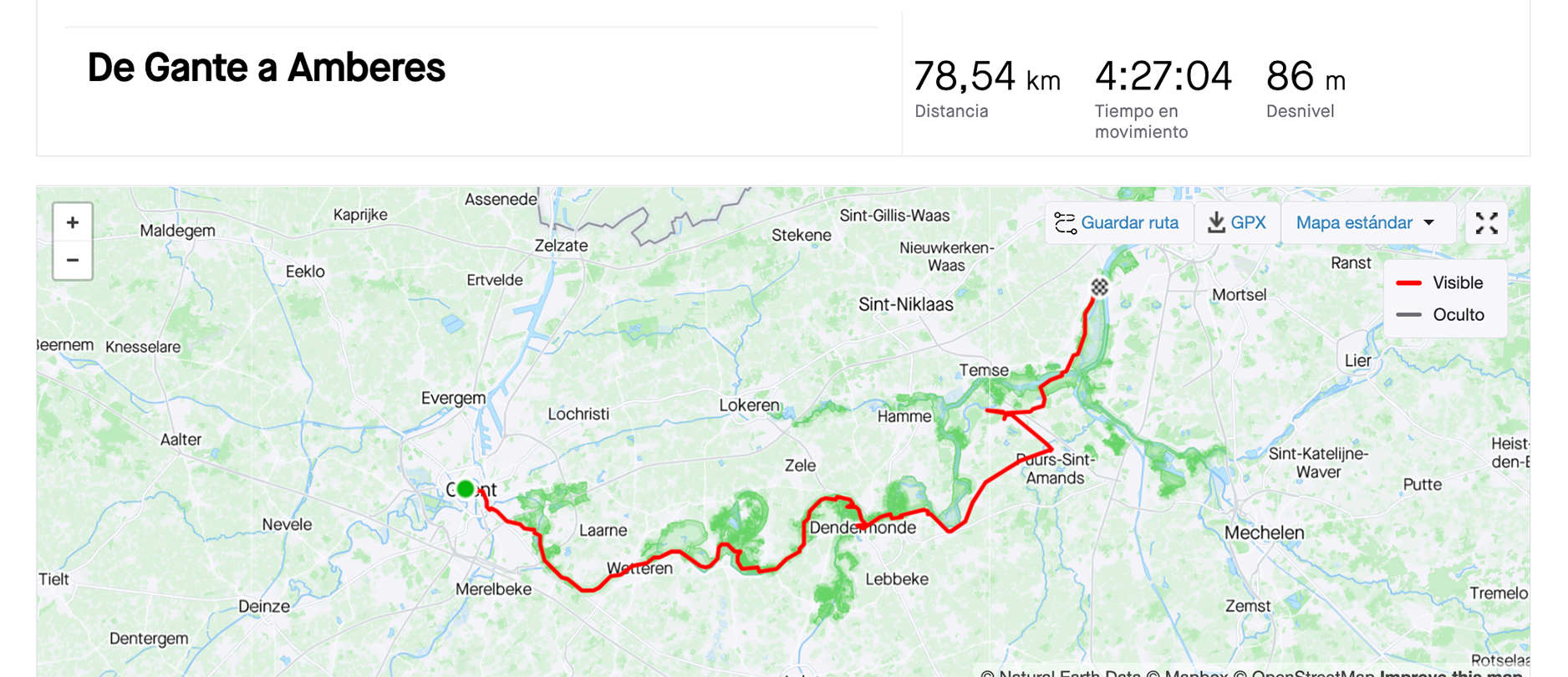
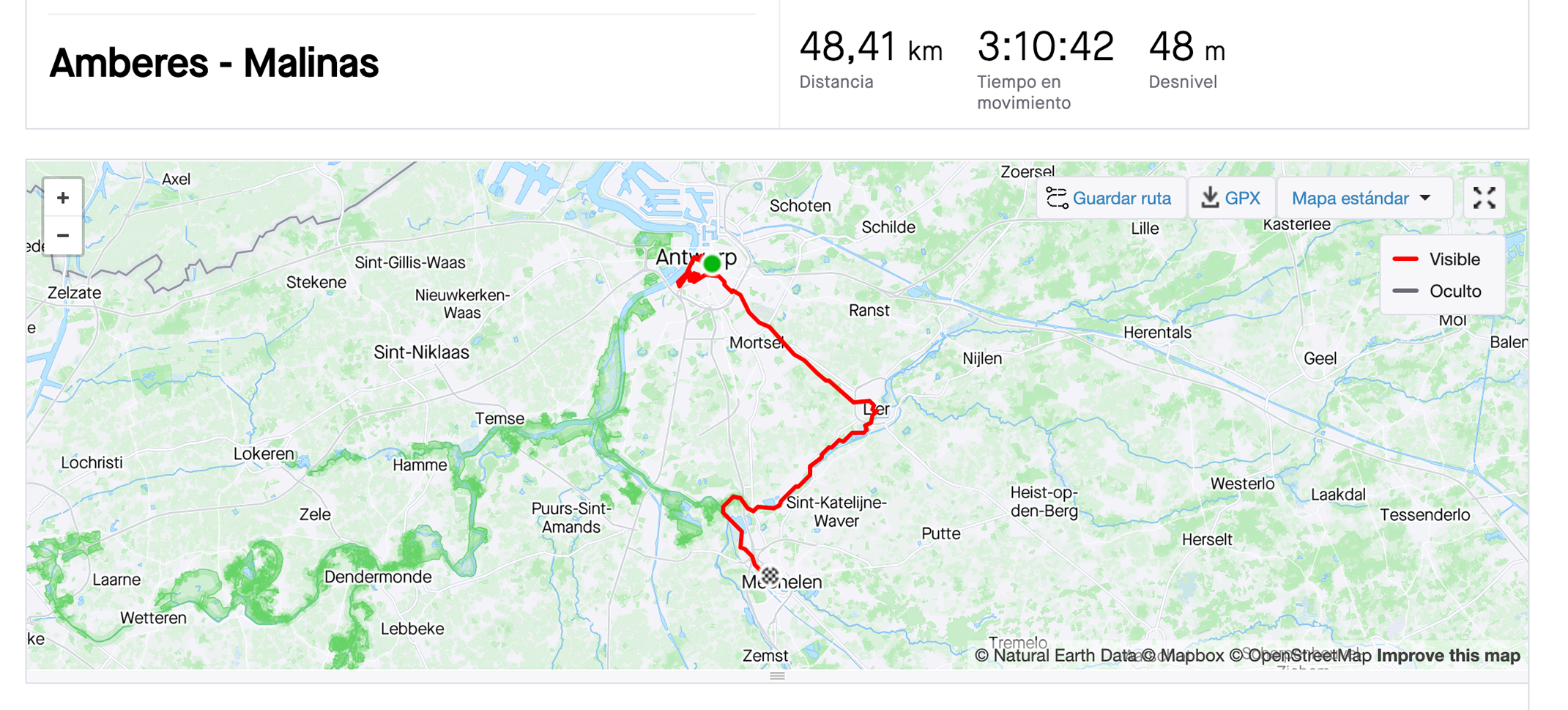
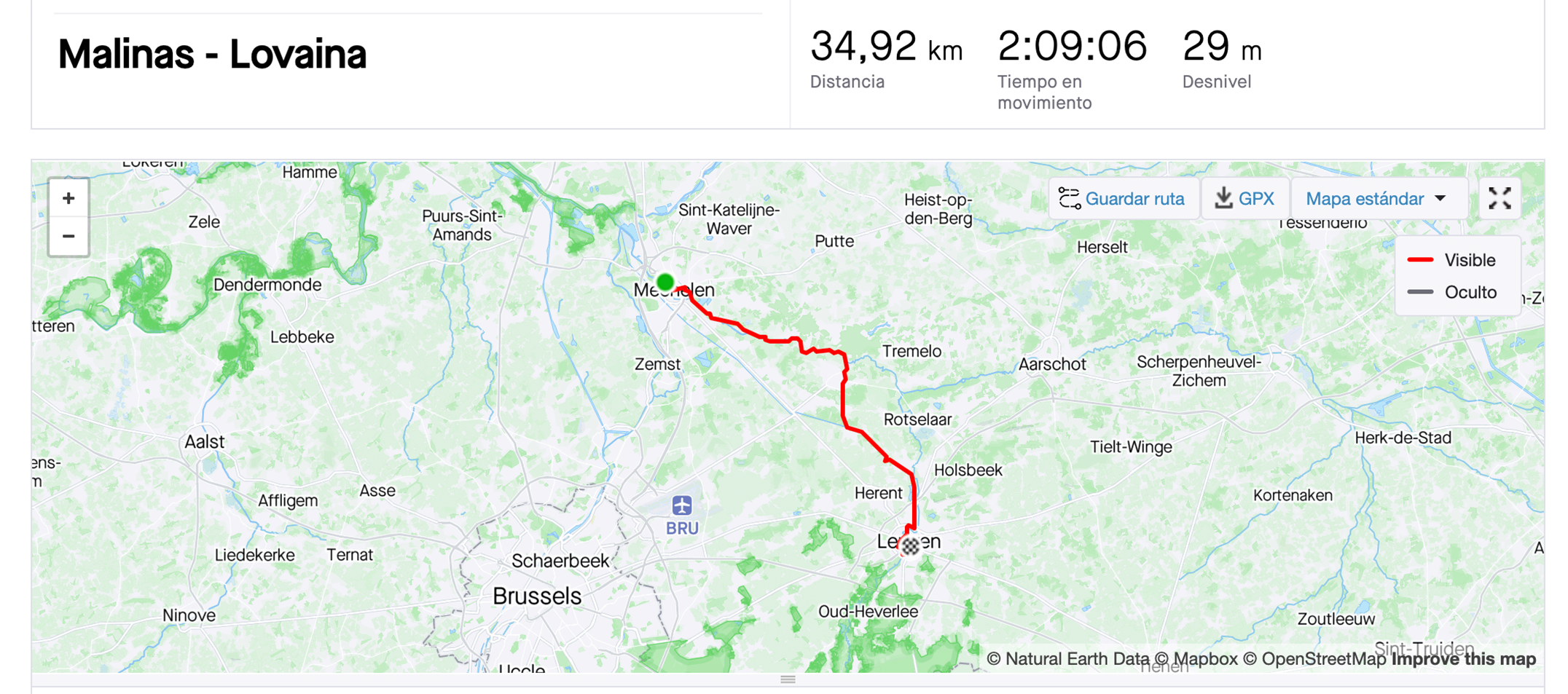
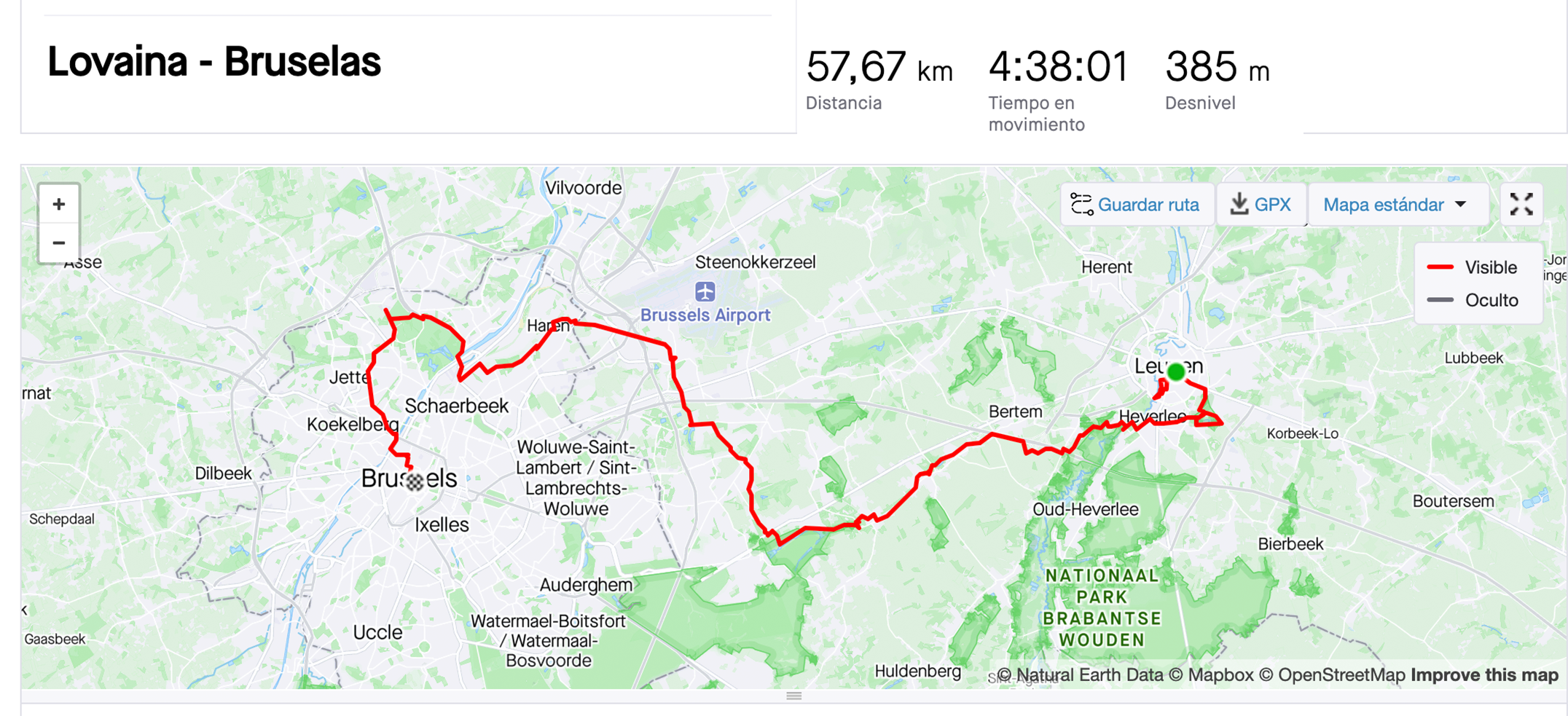
© of all the images: Andrés Valentín-Gamazo




